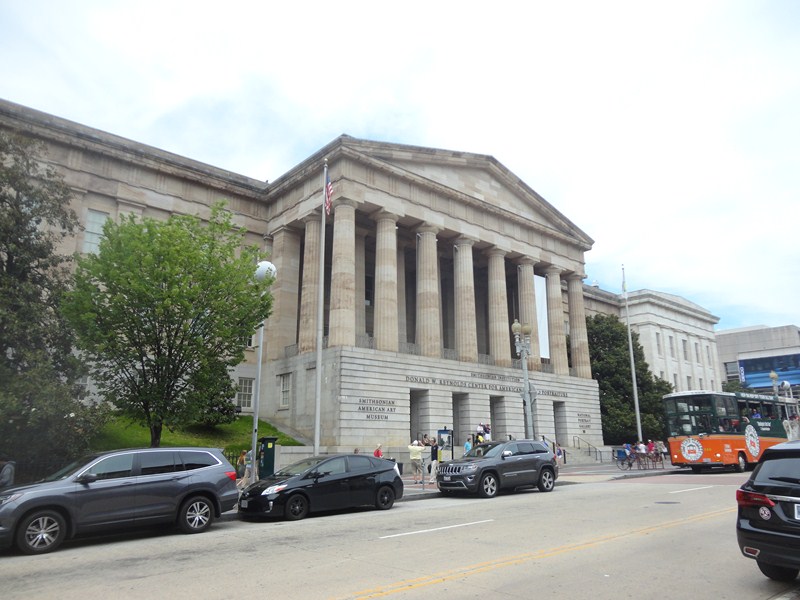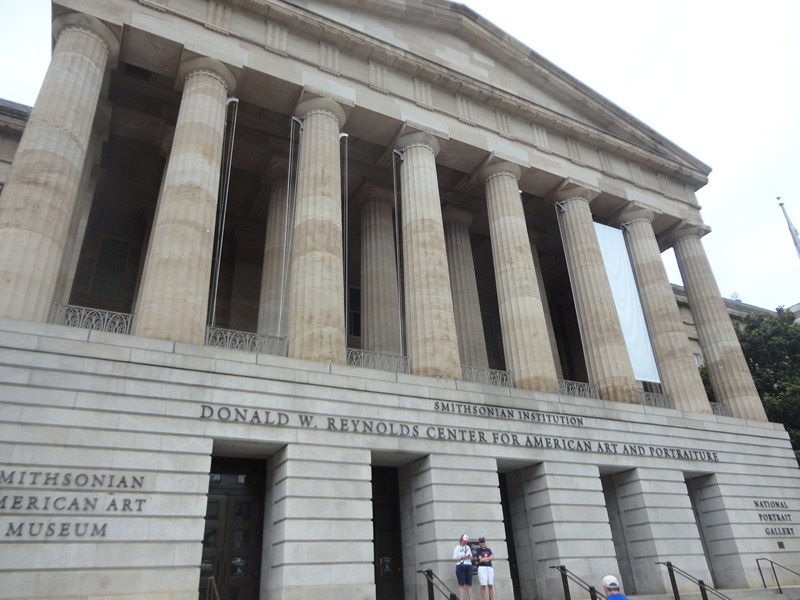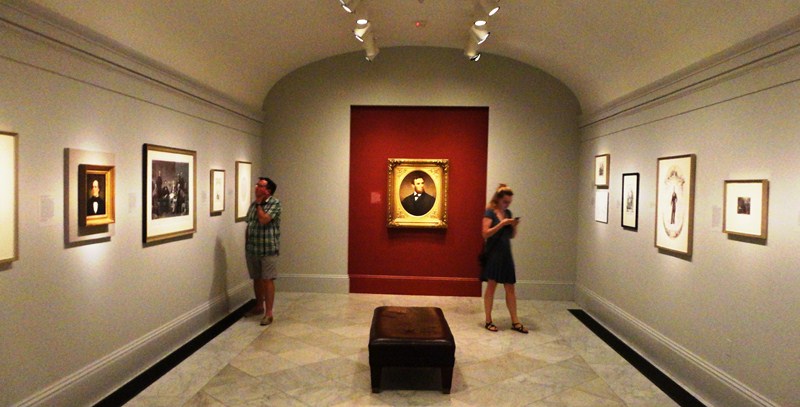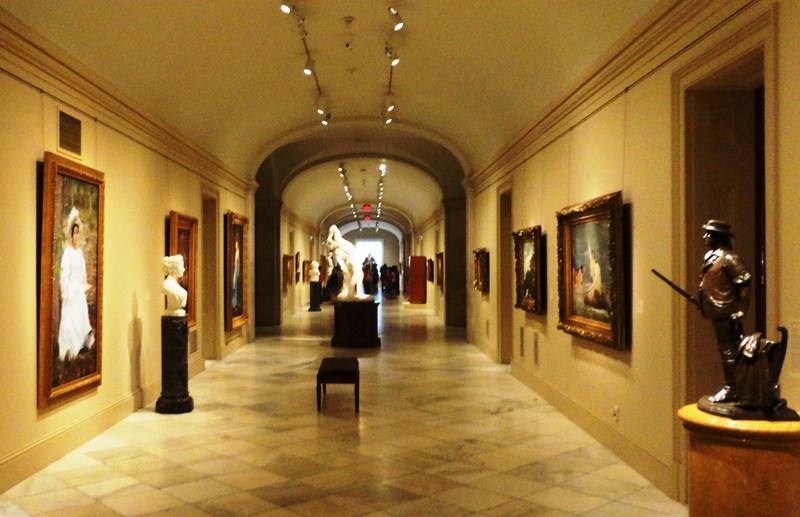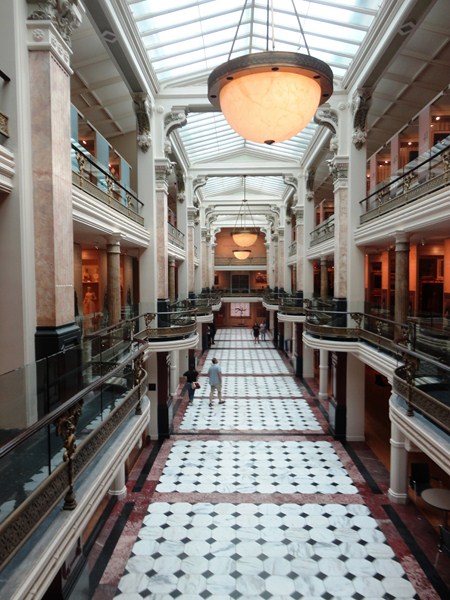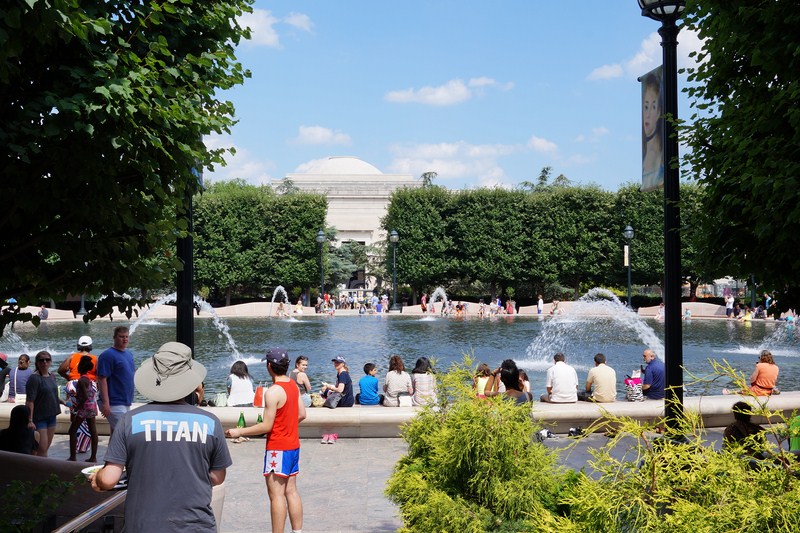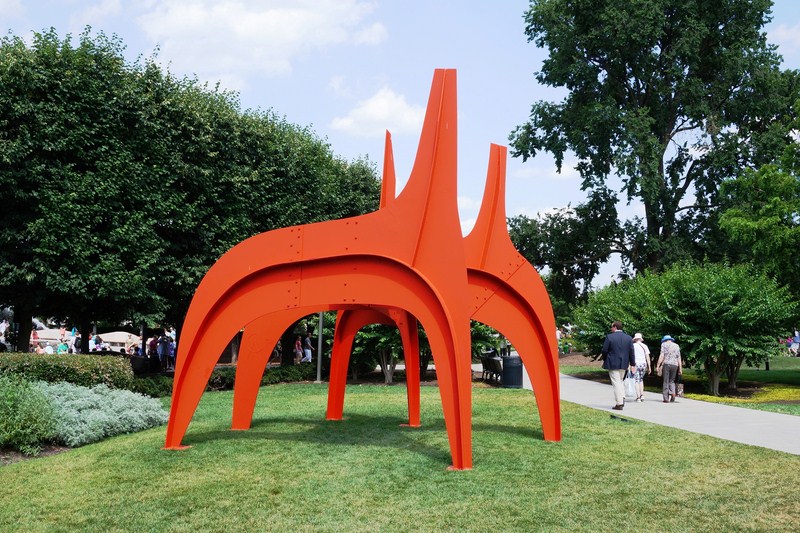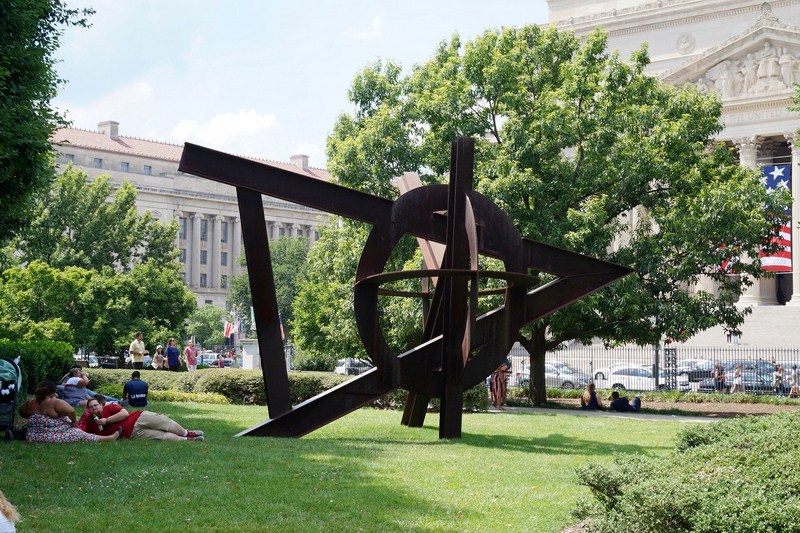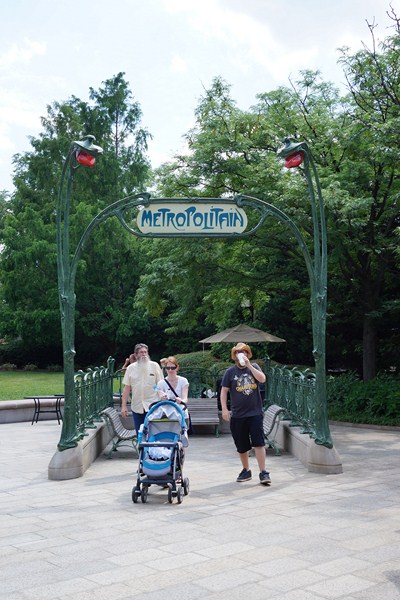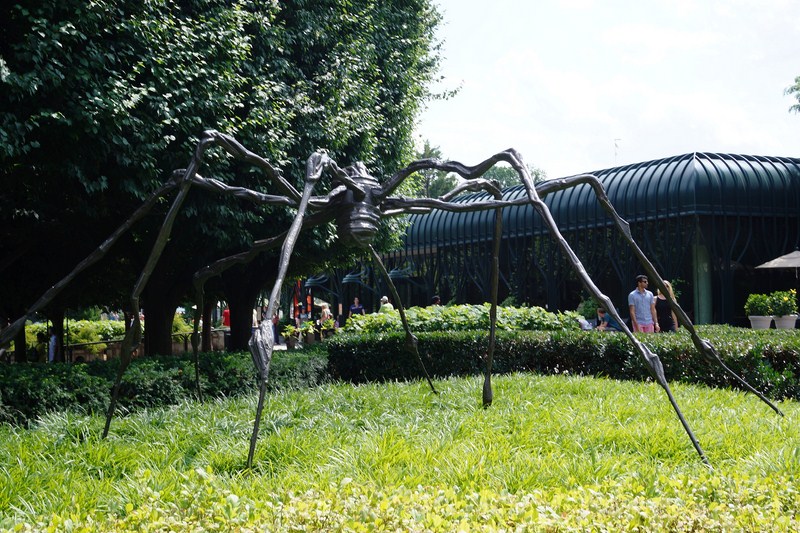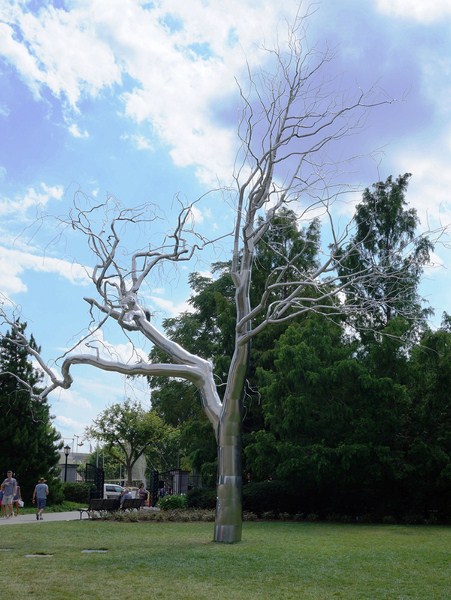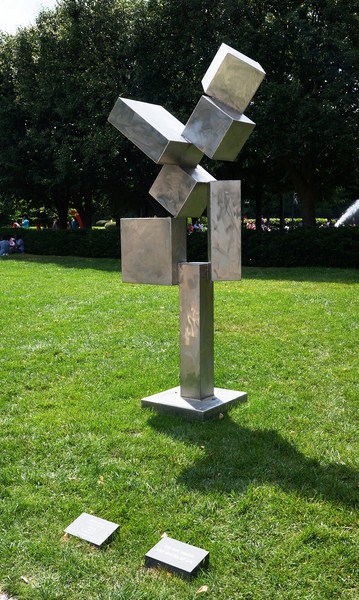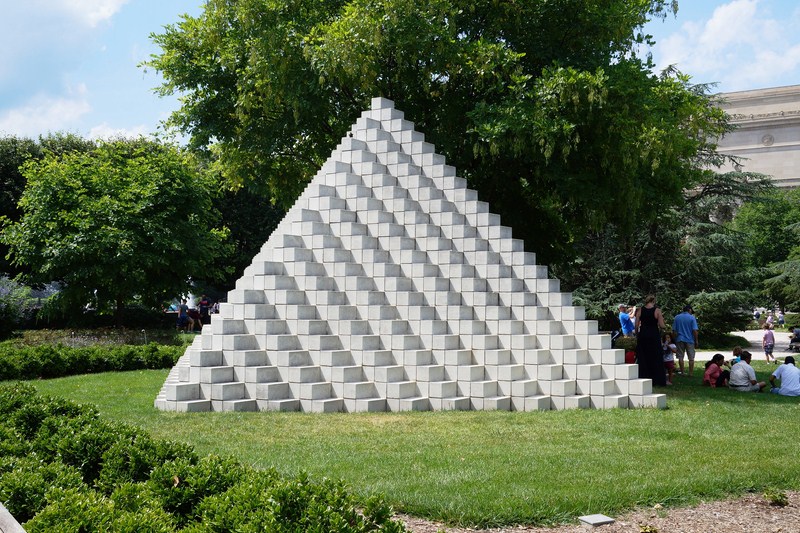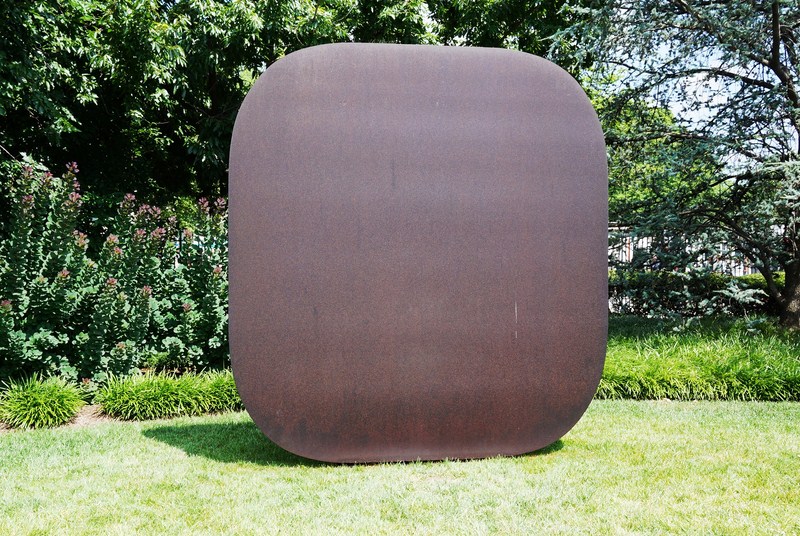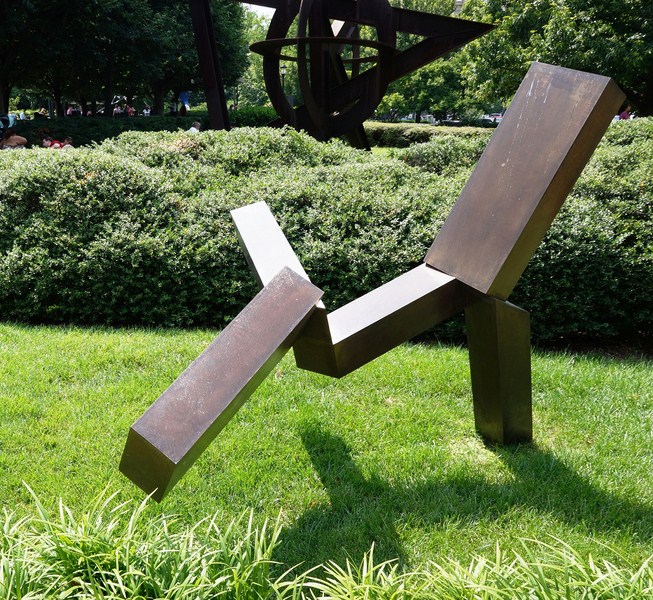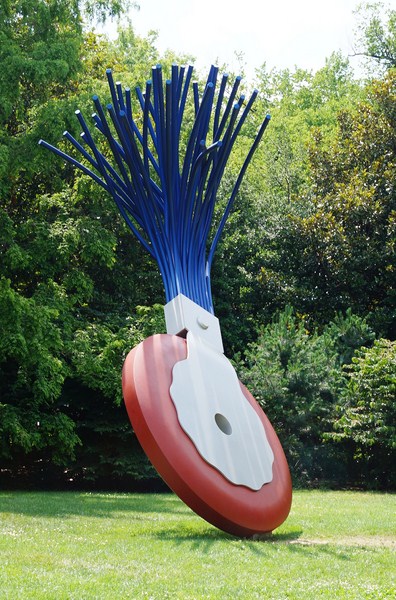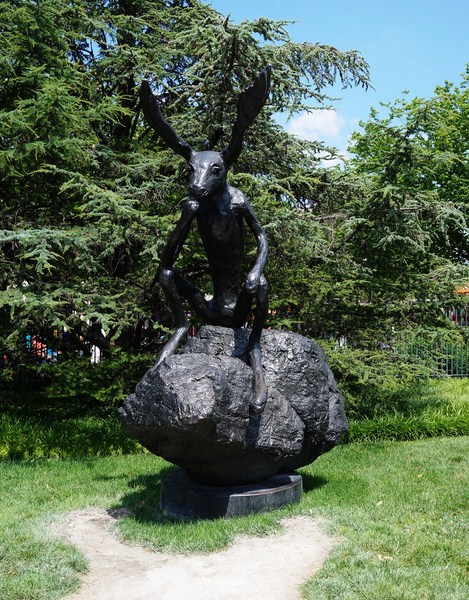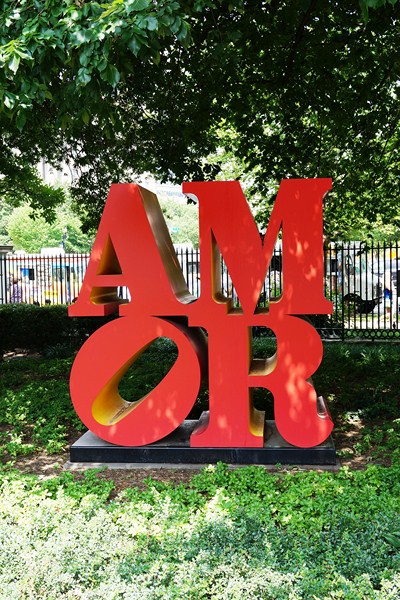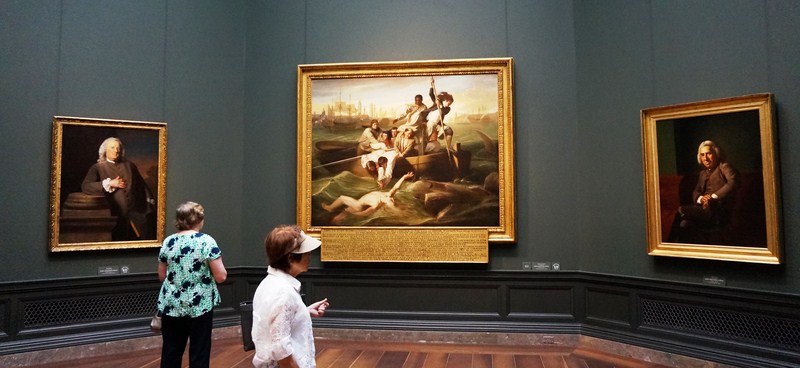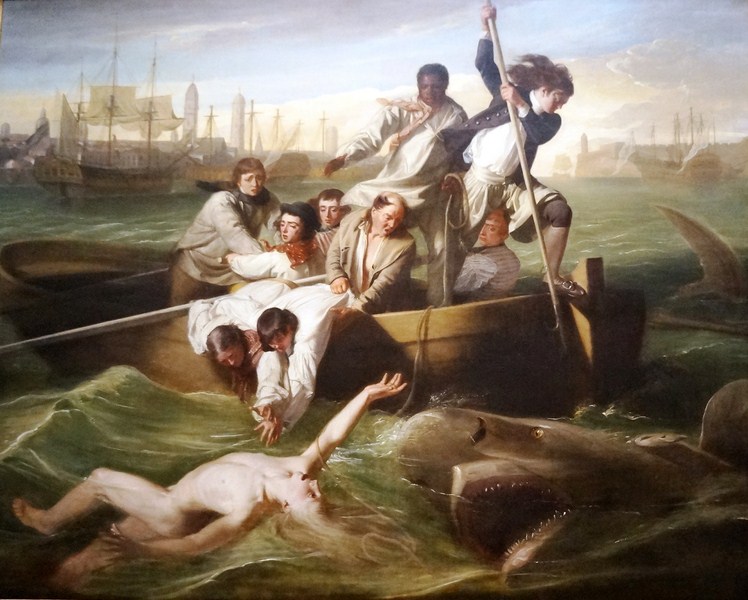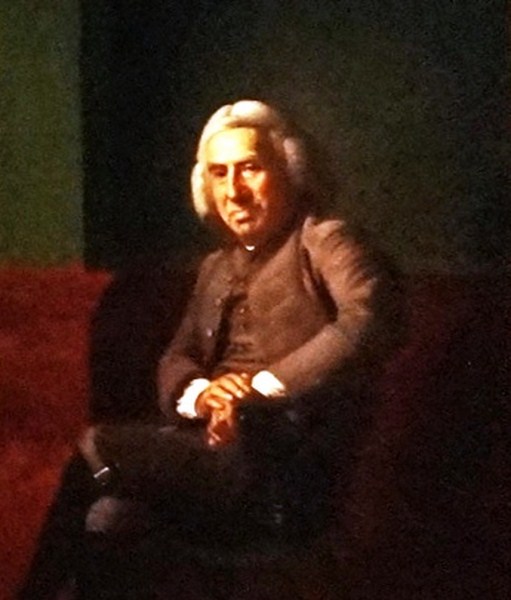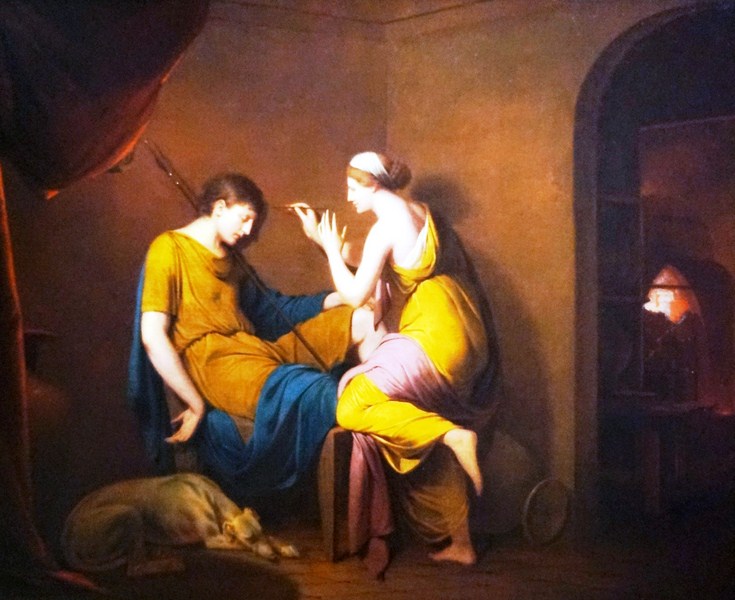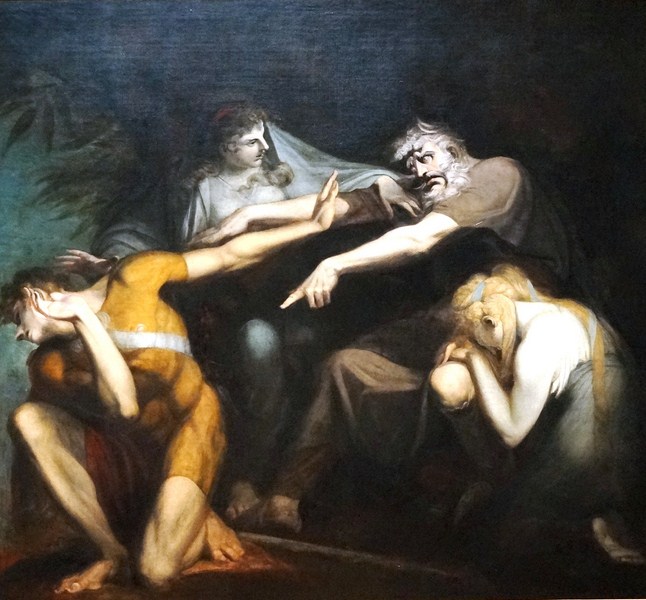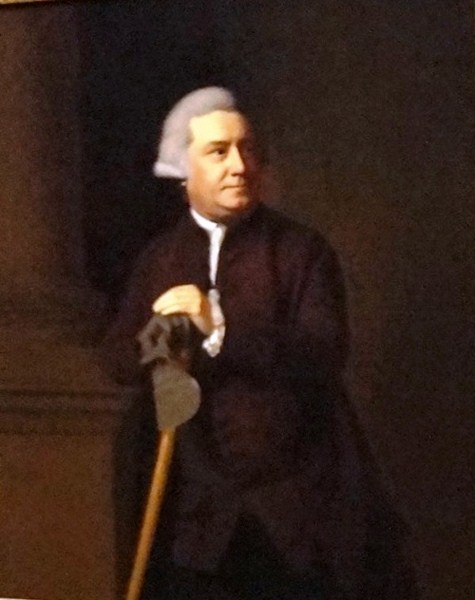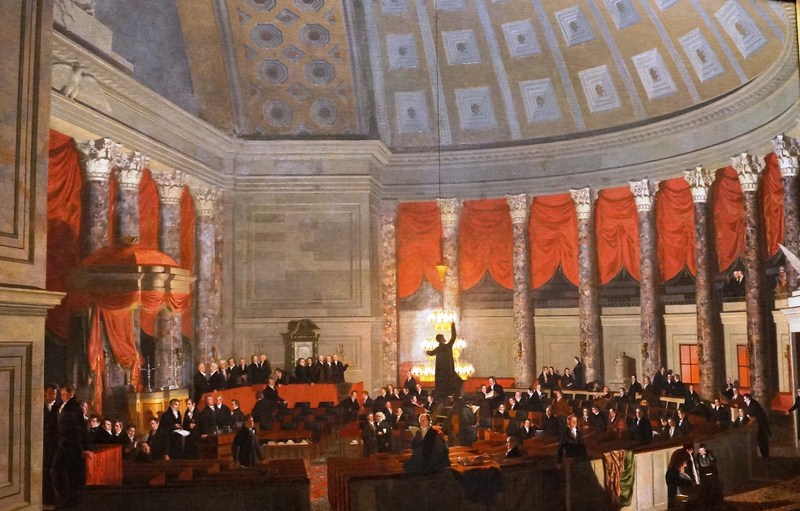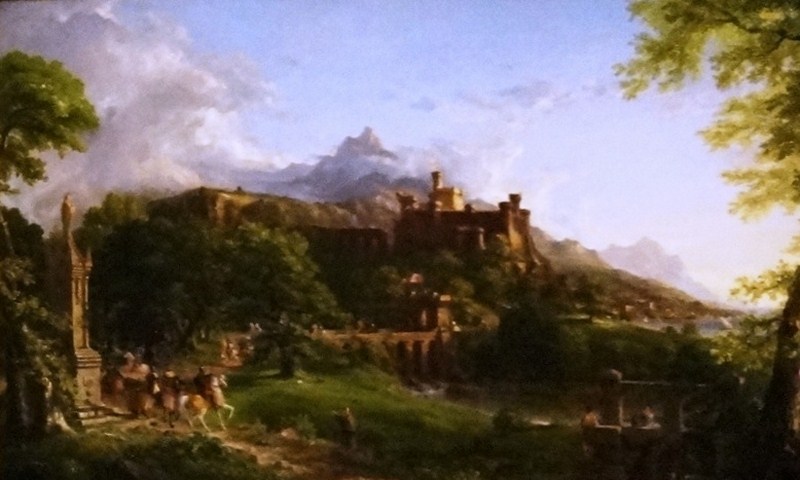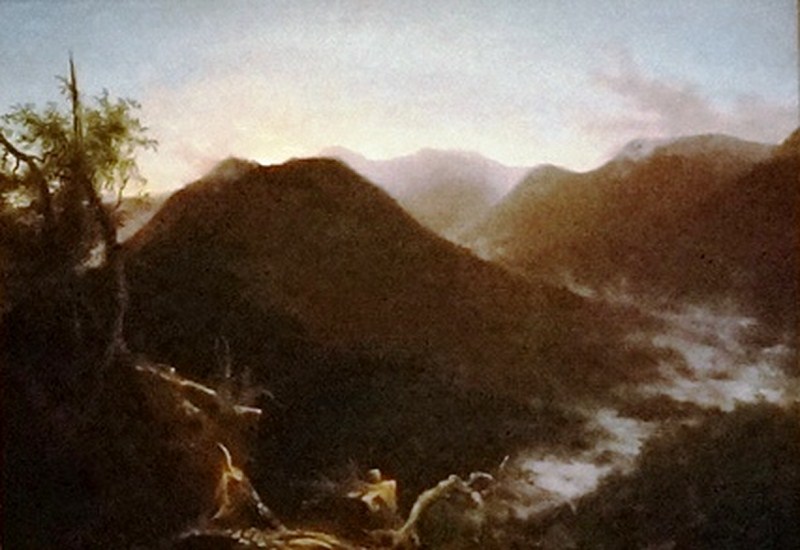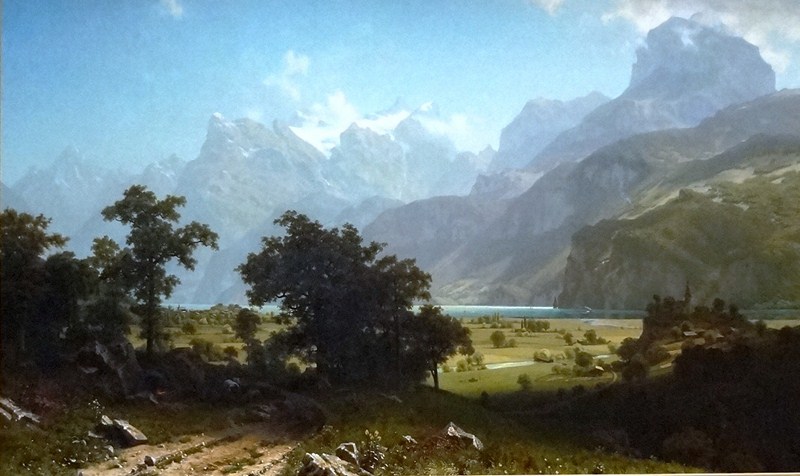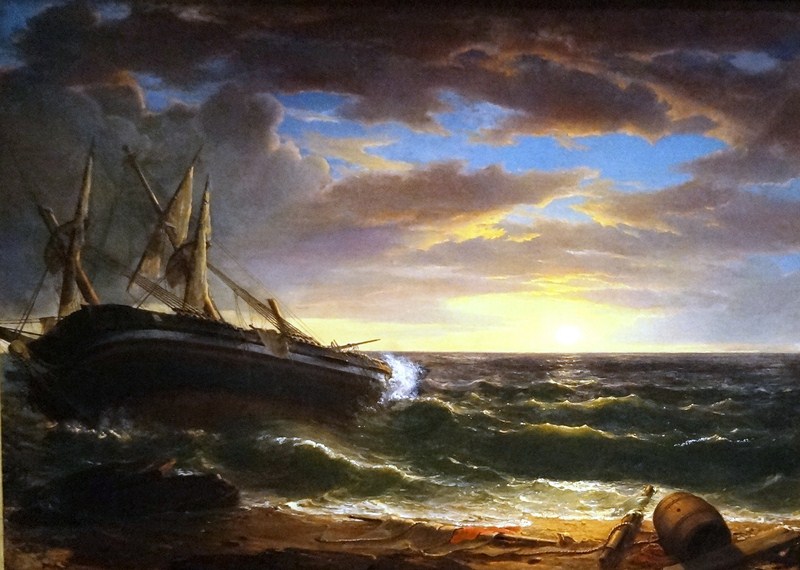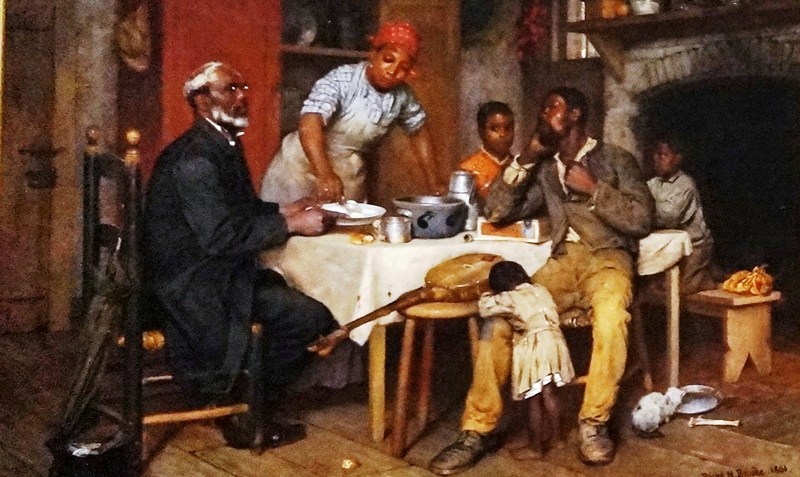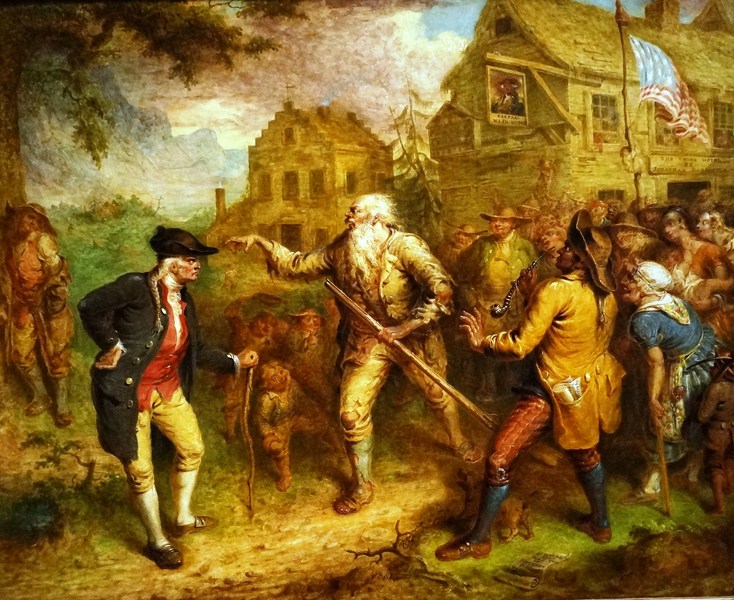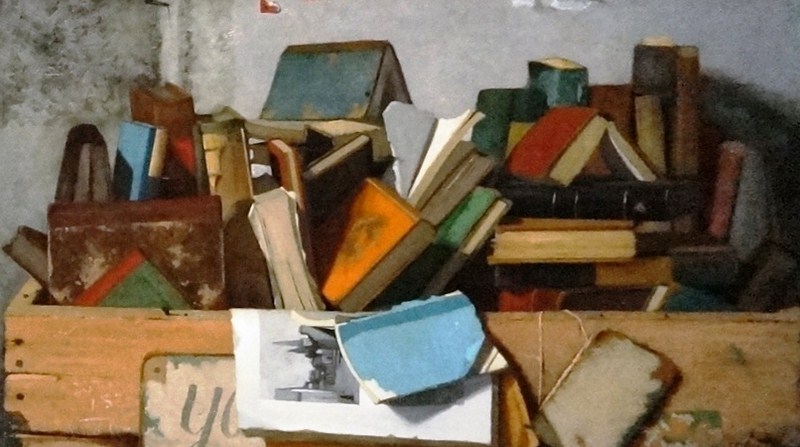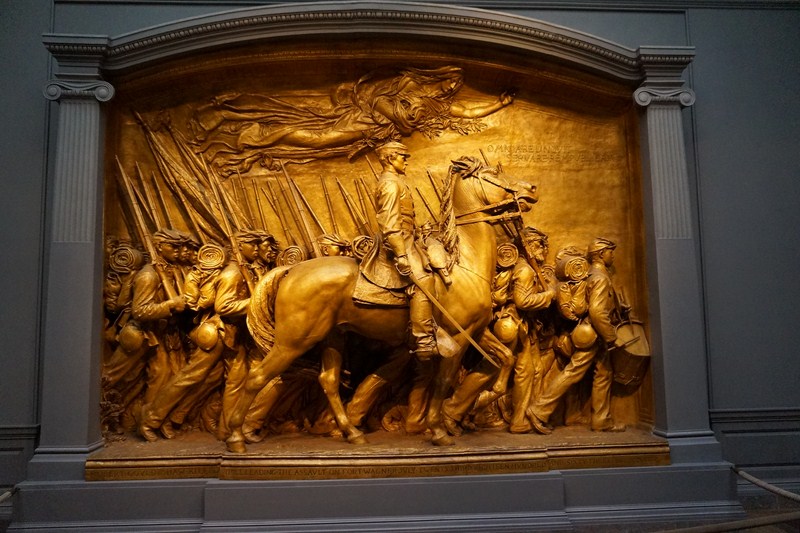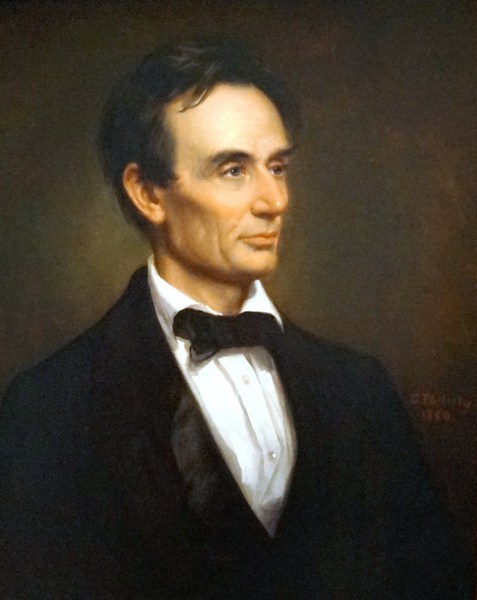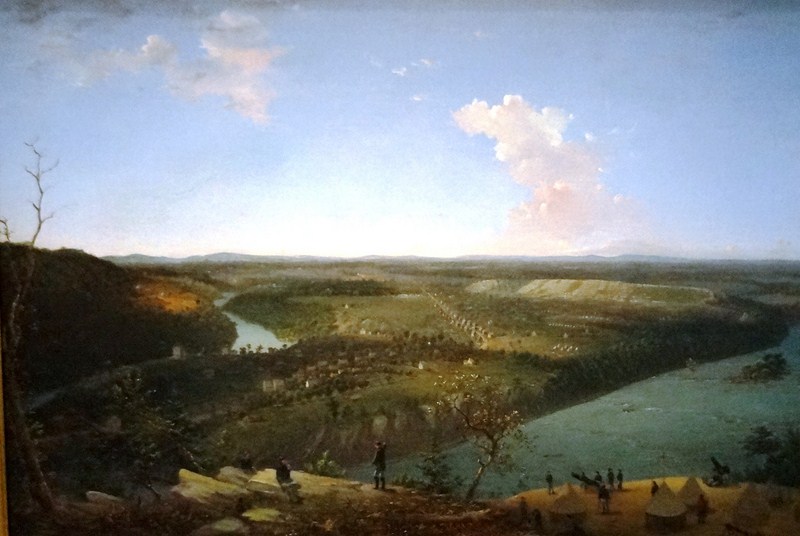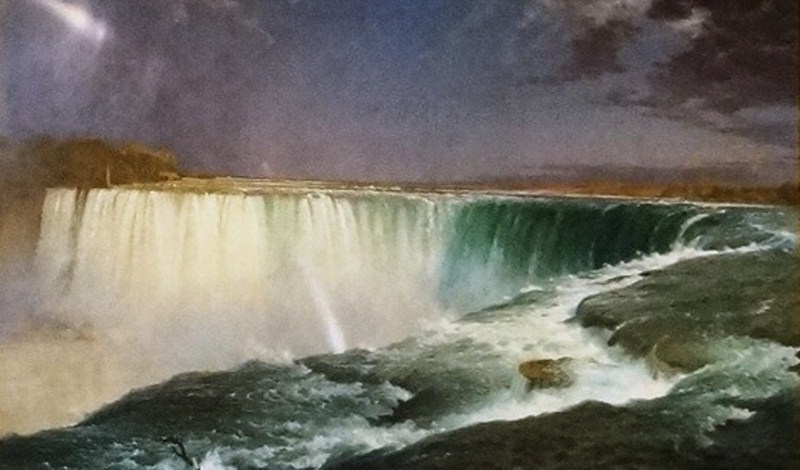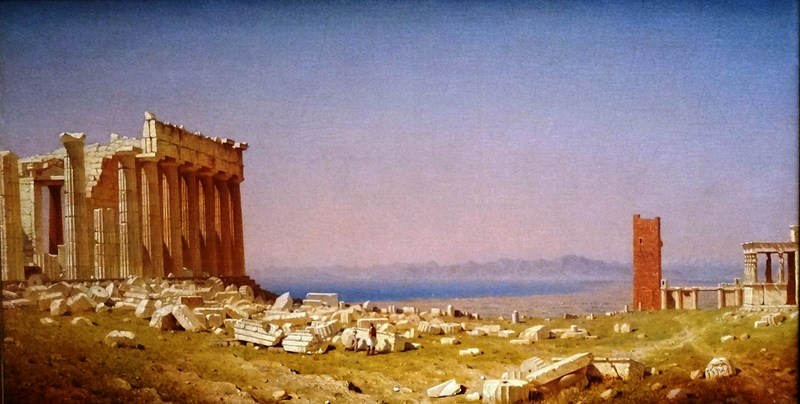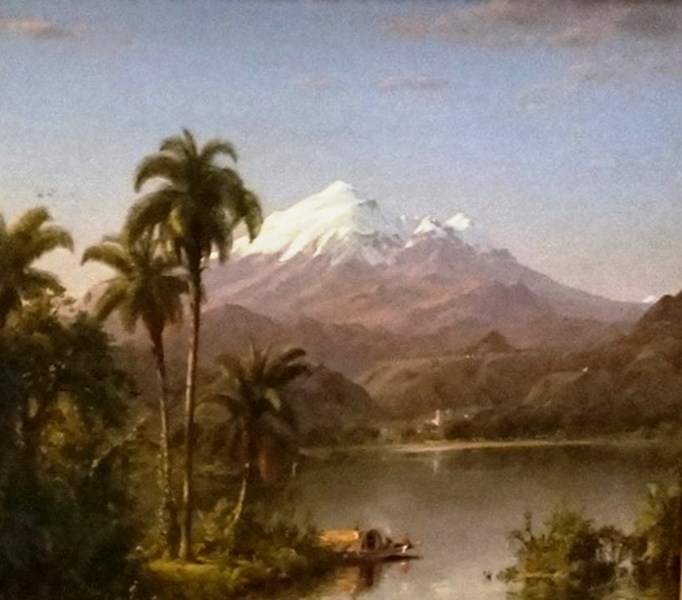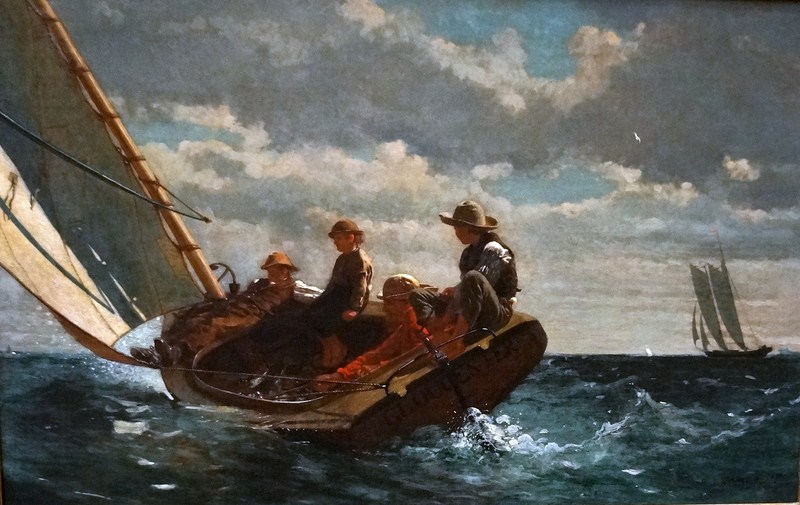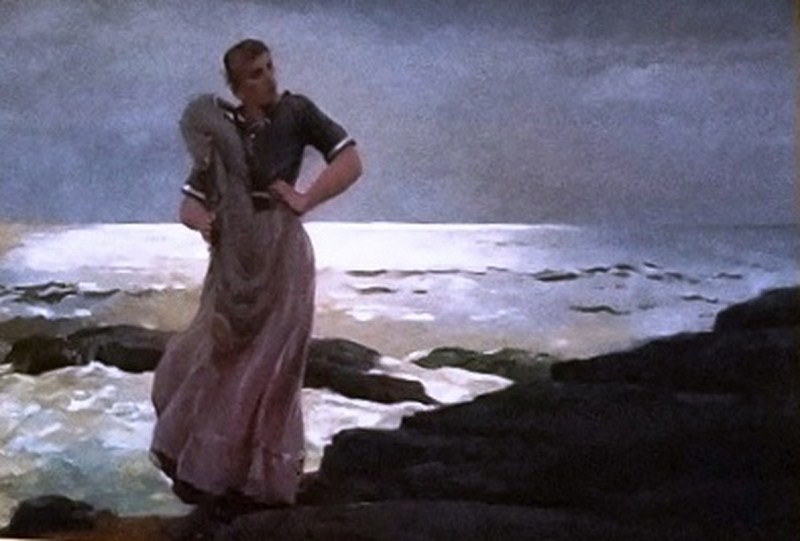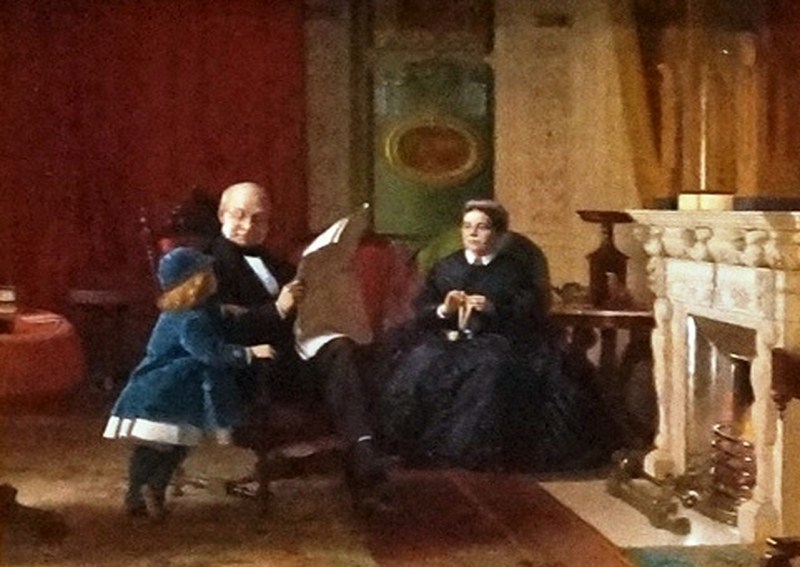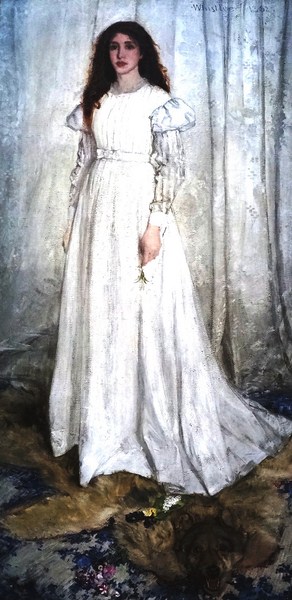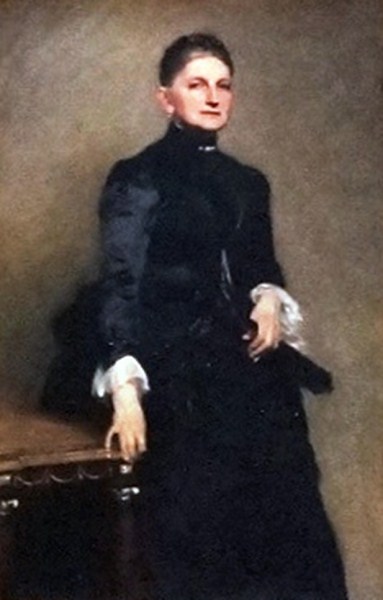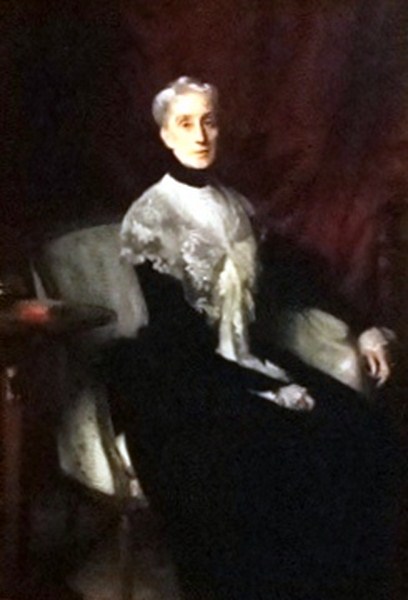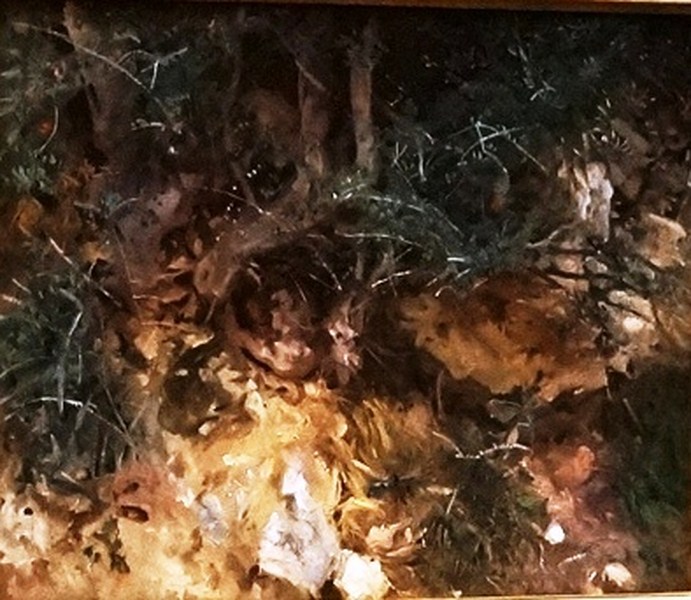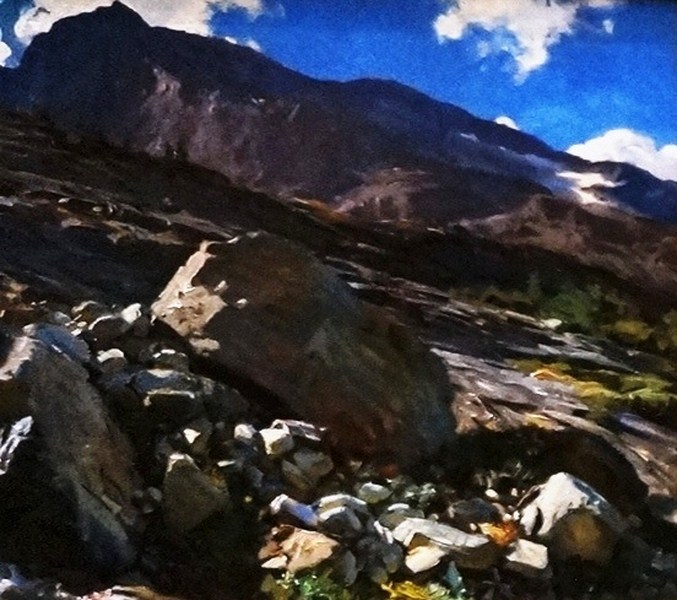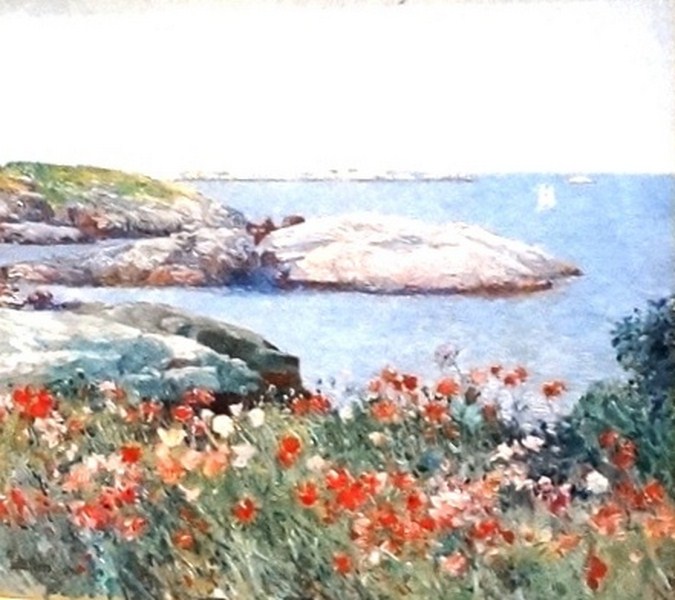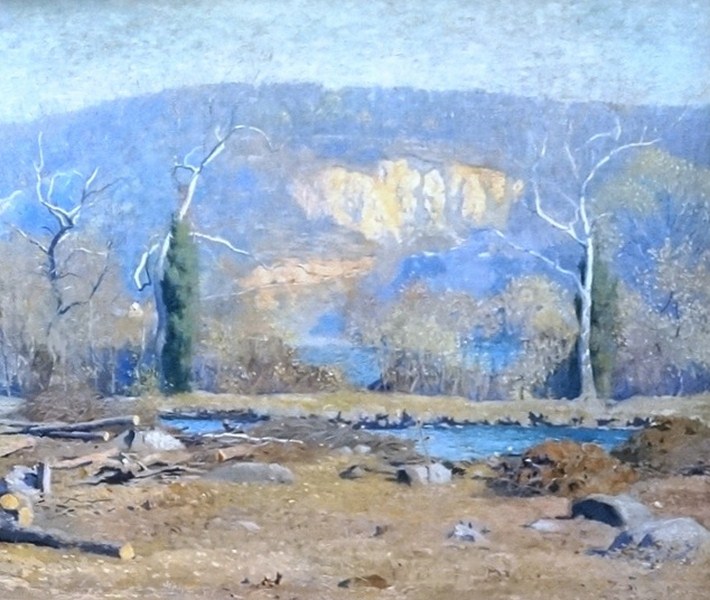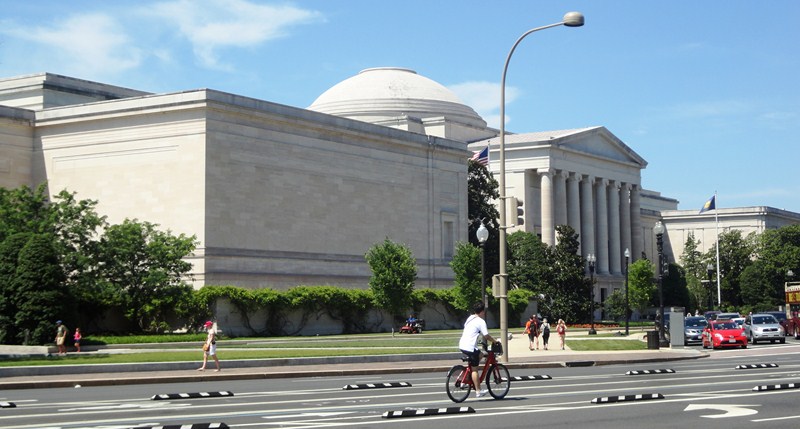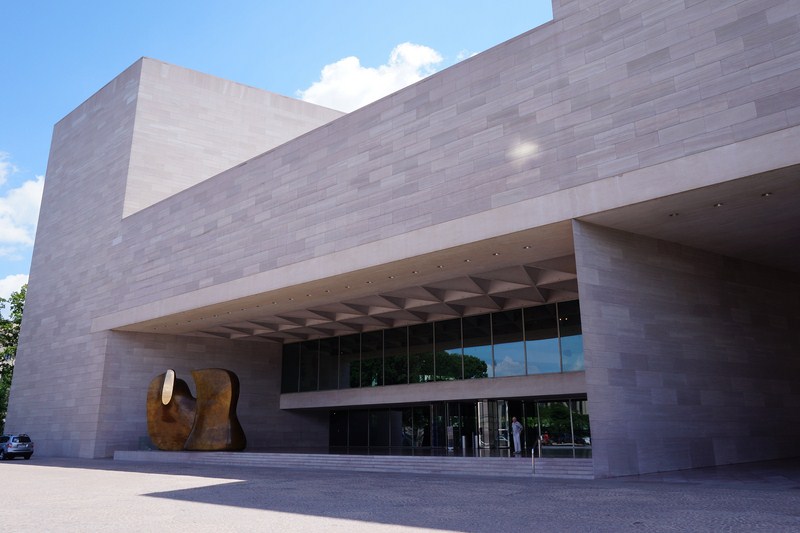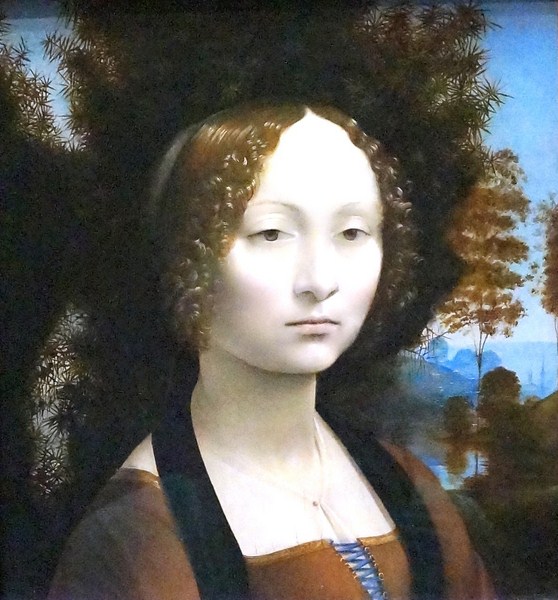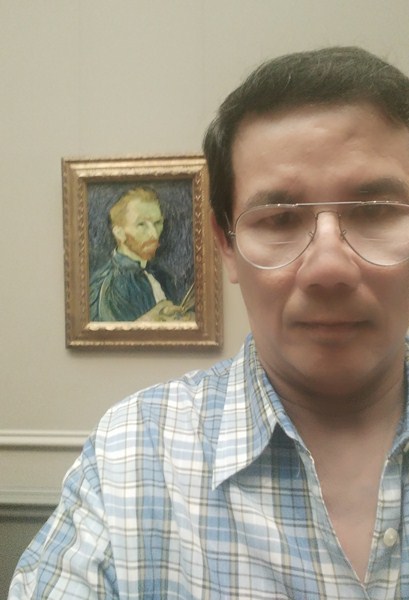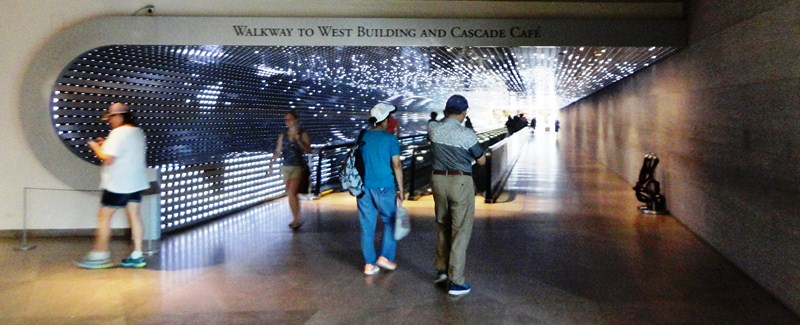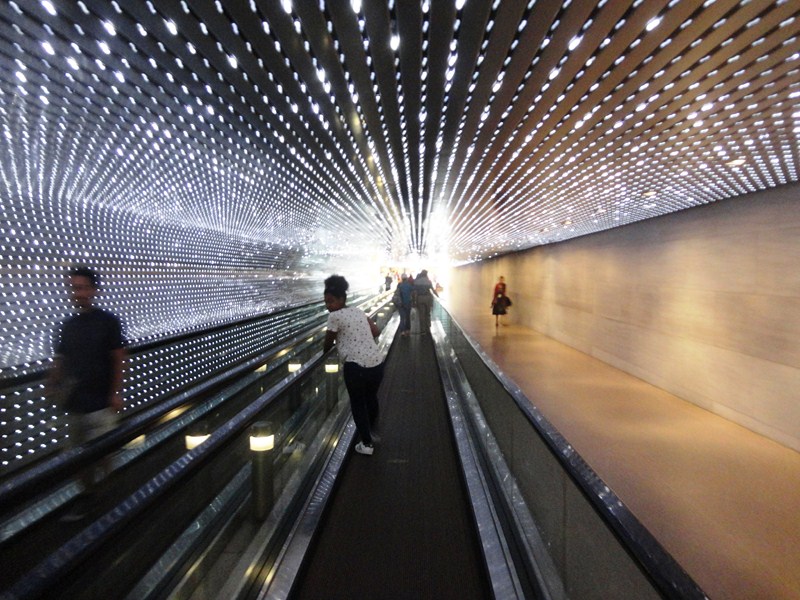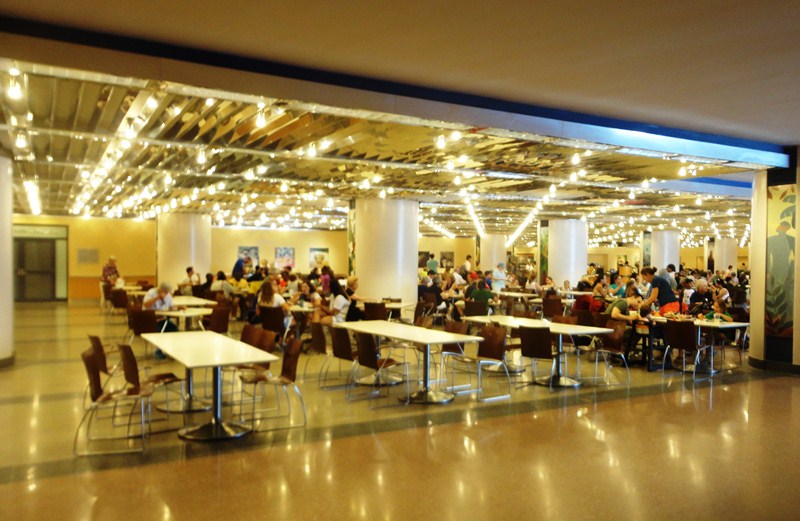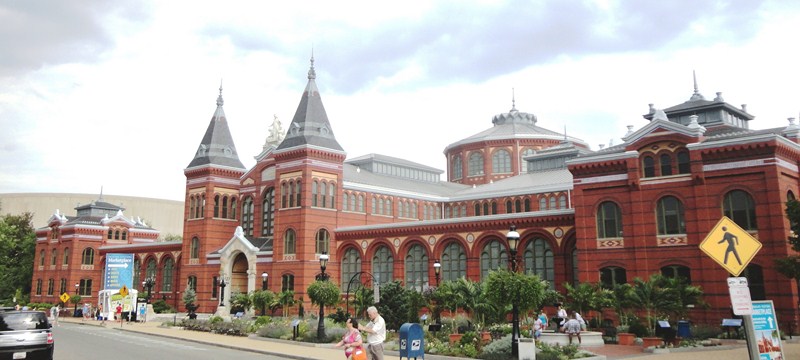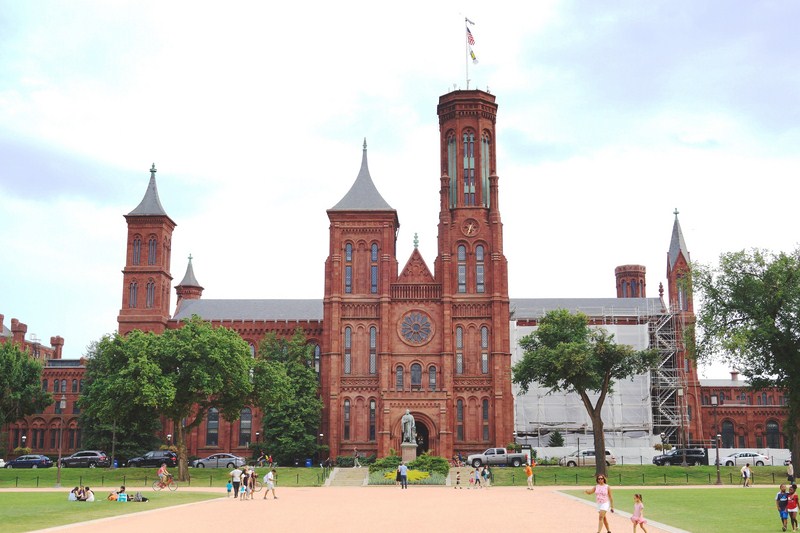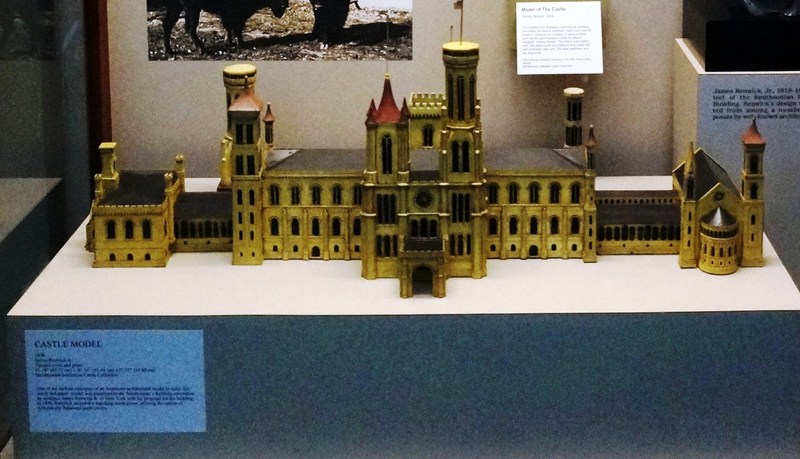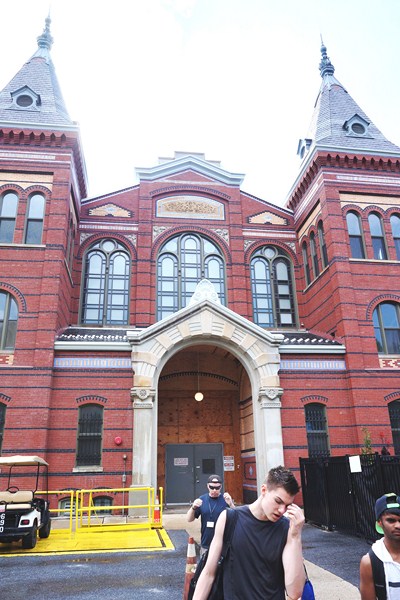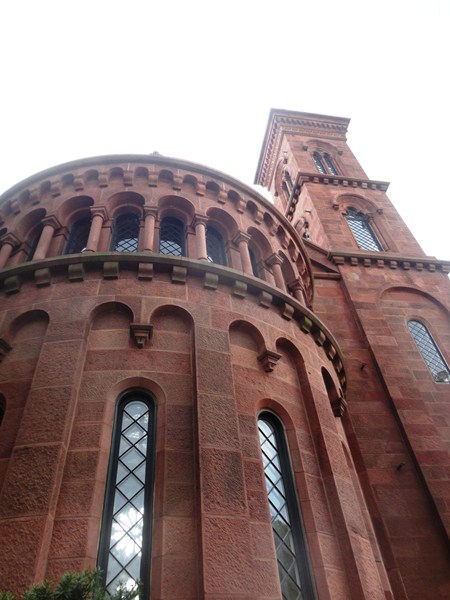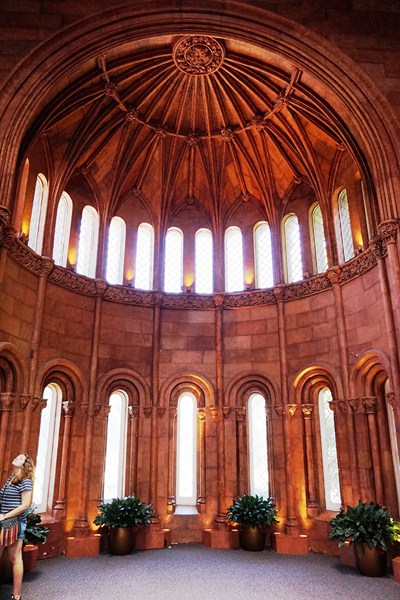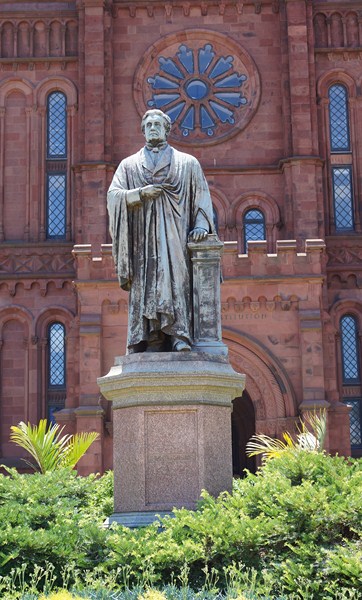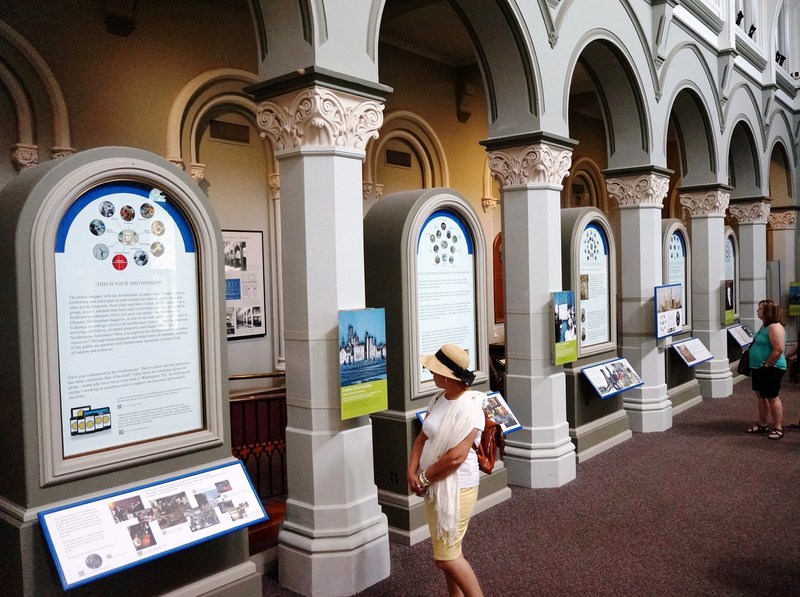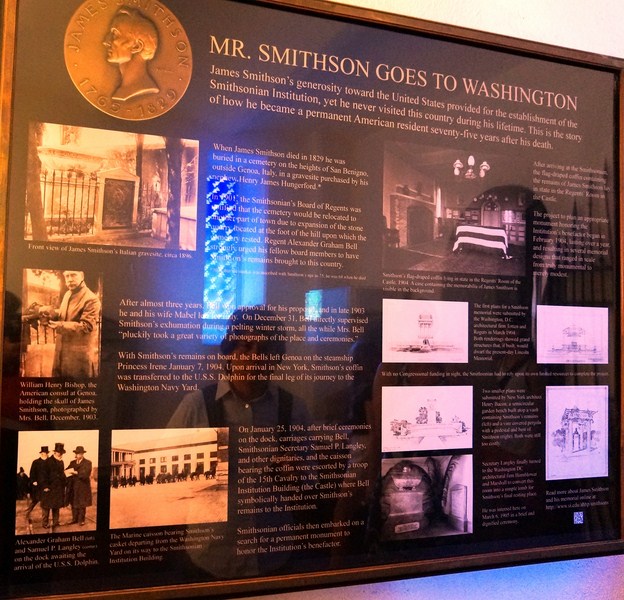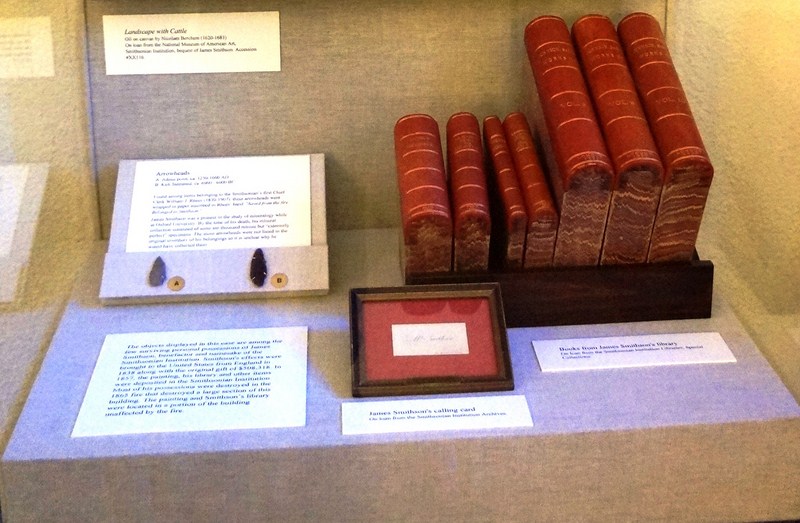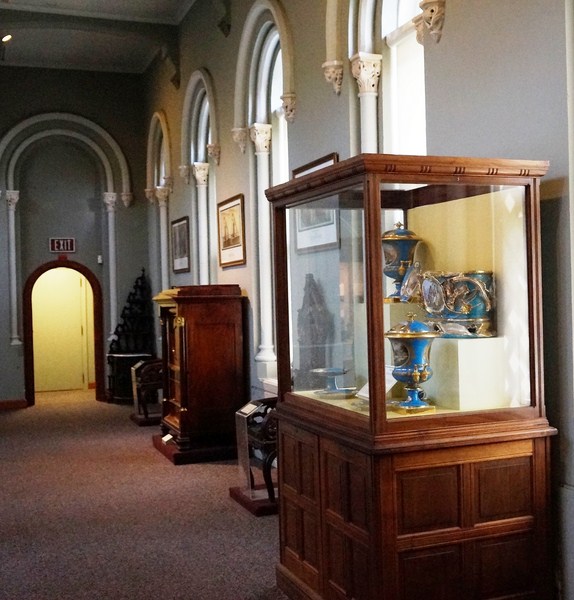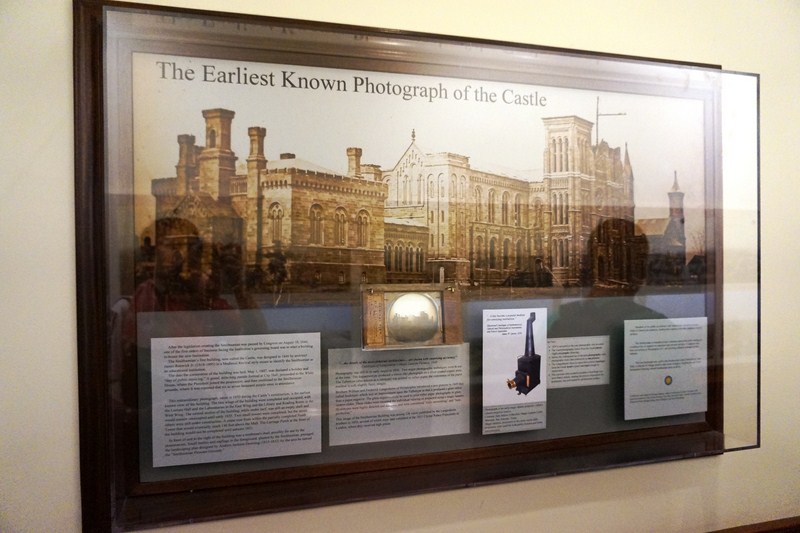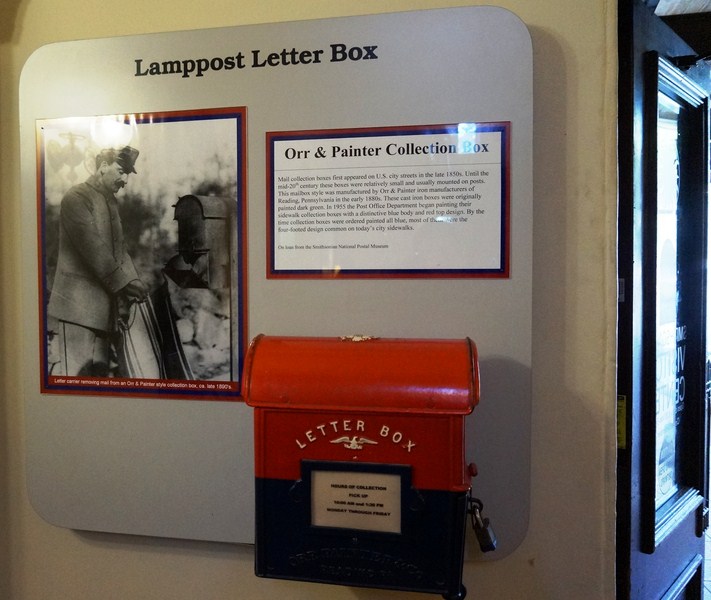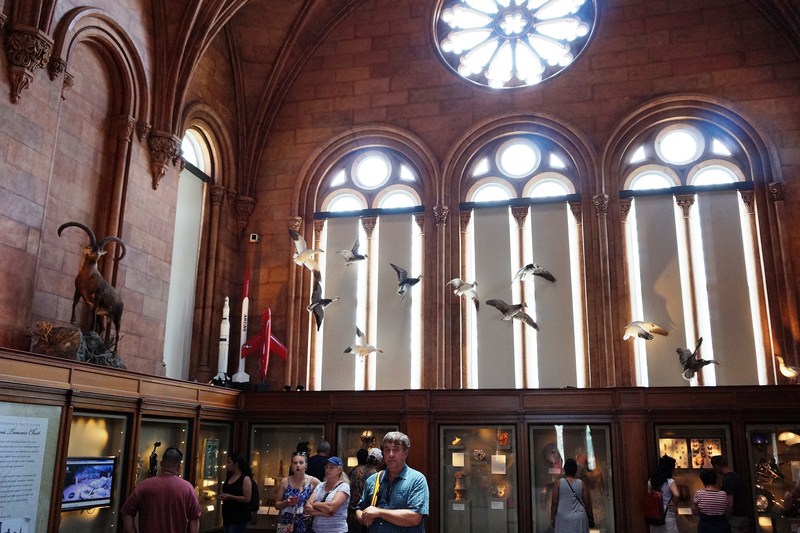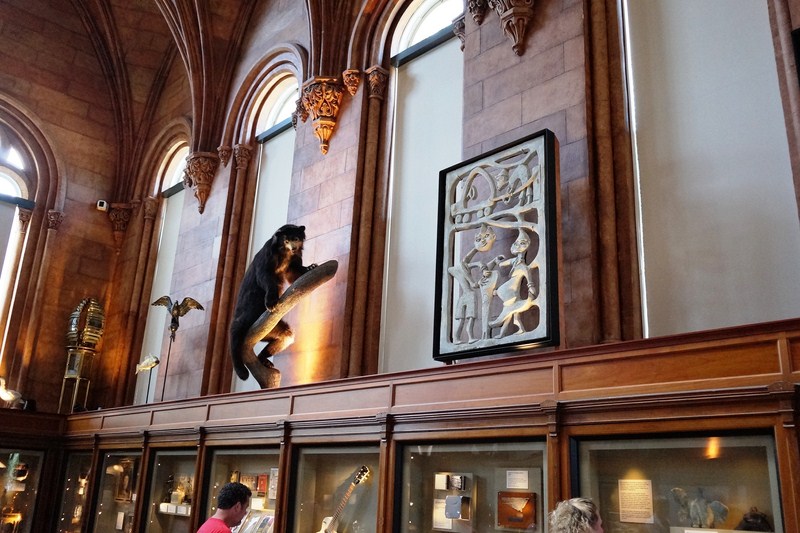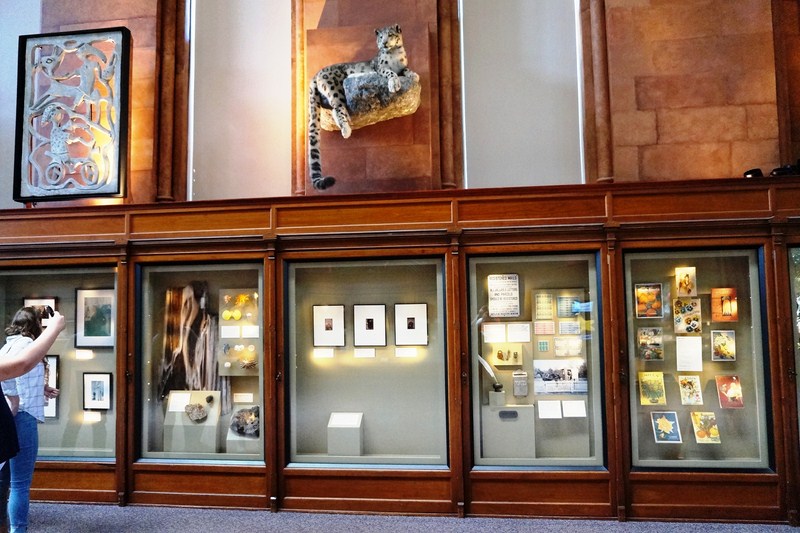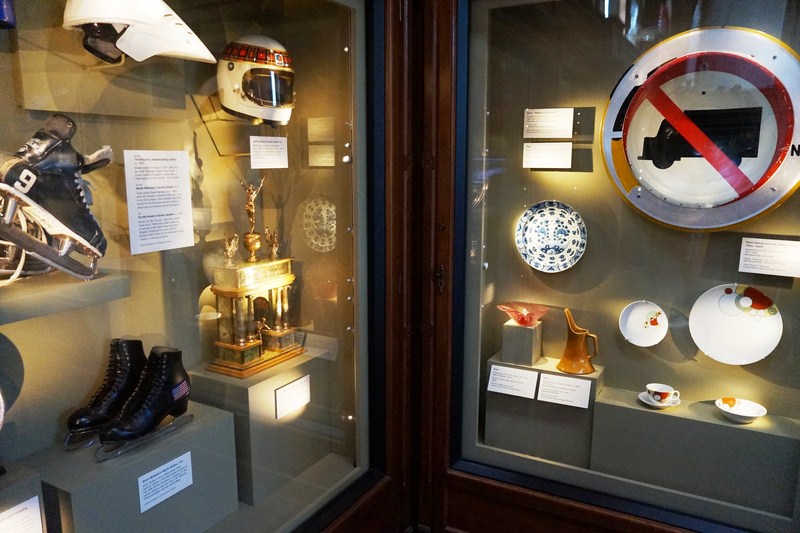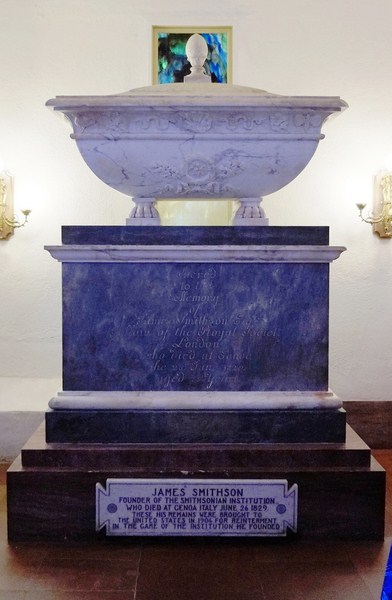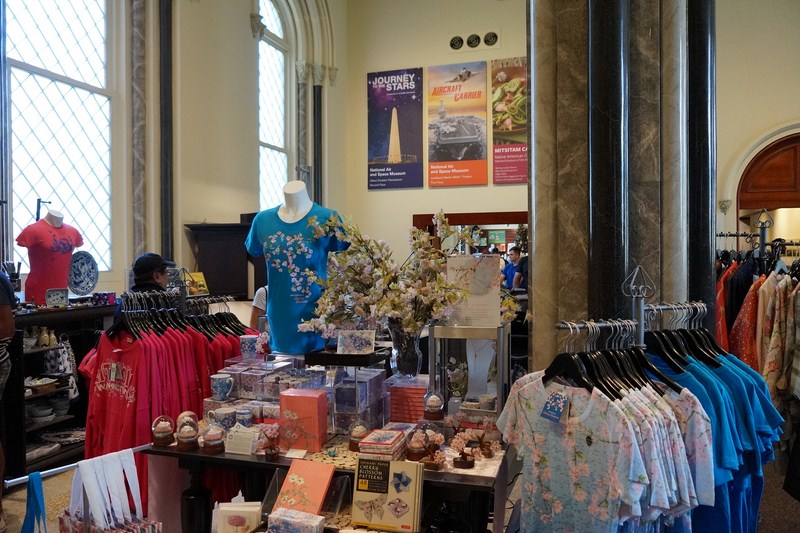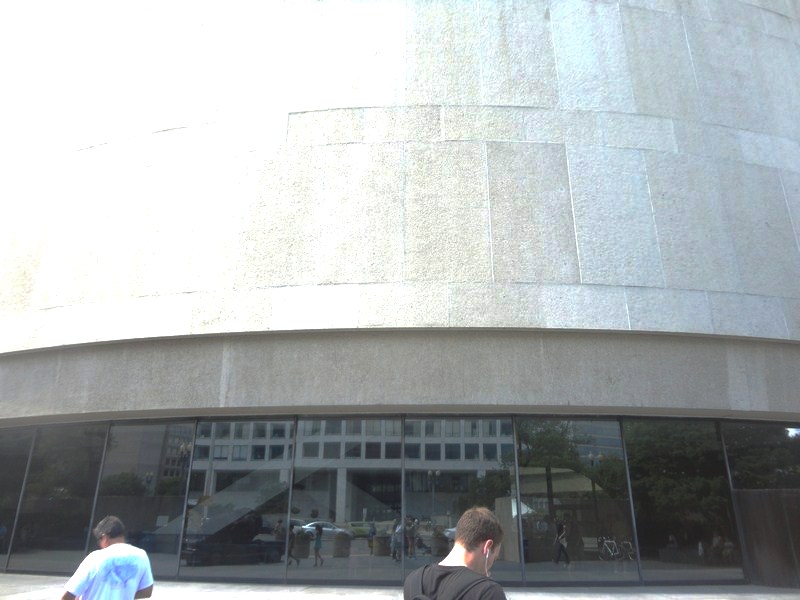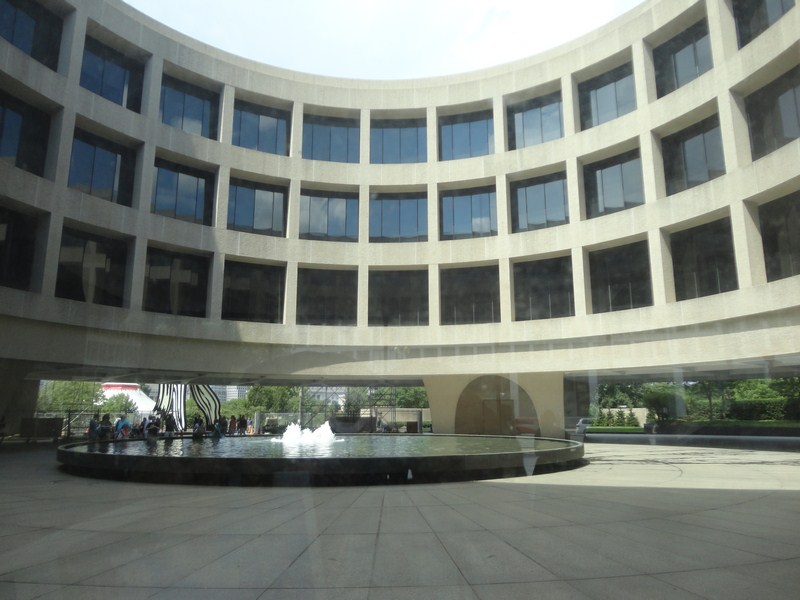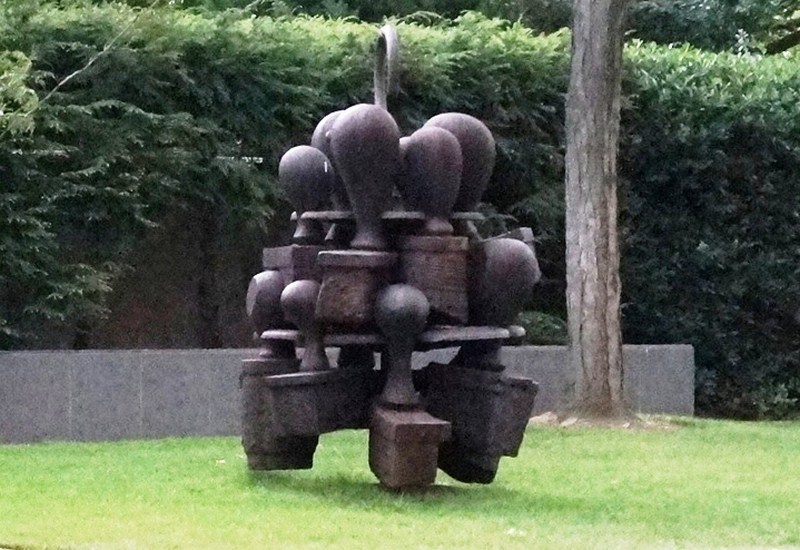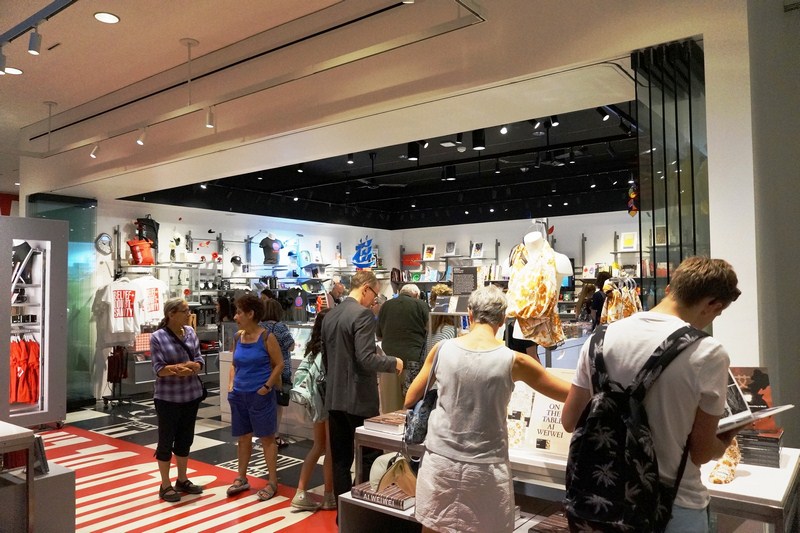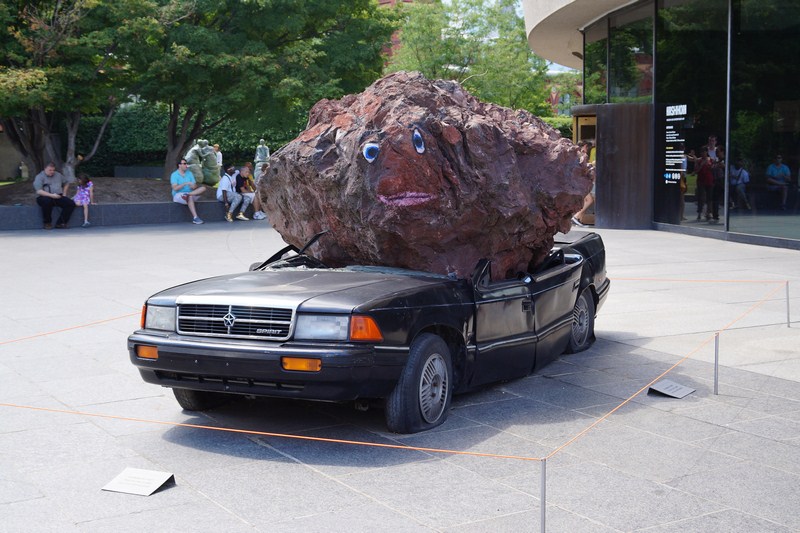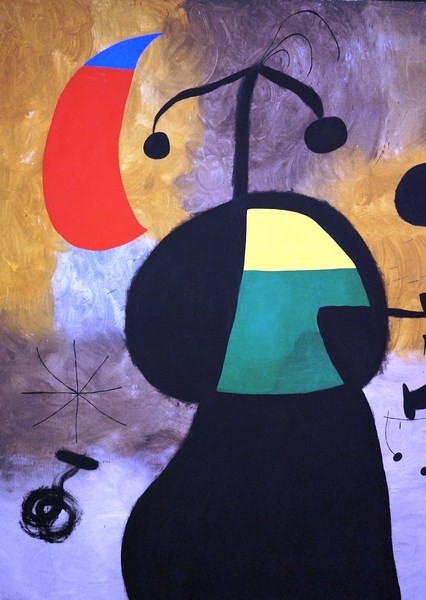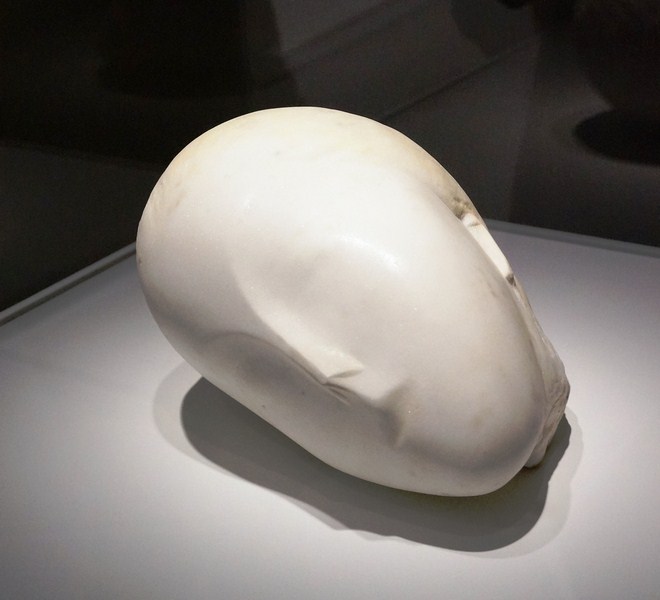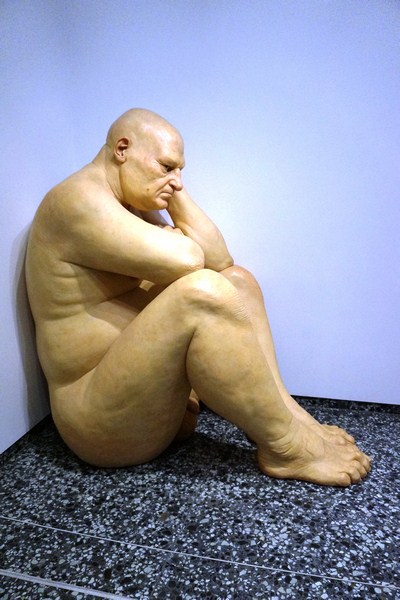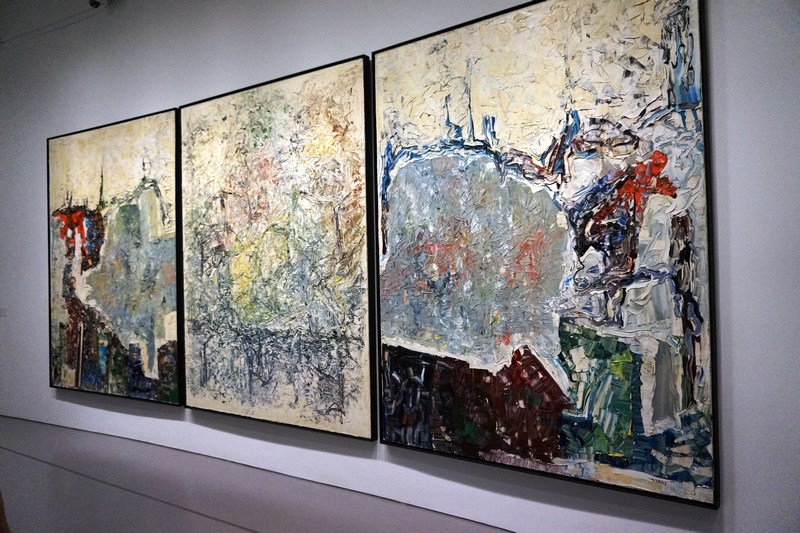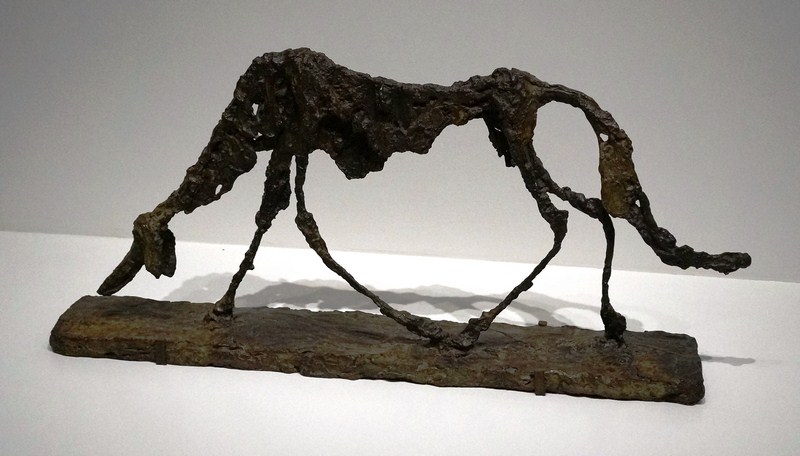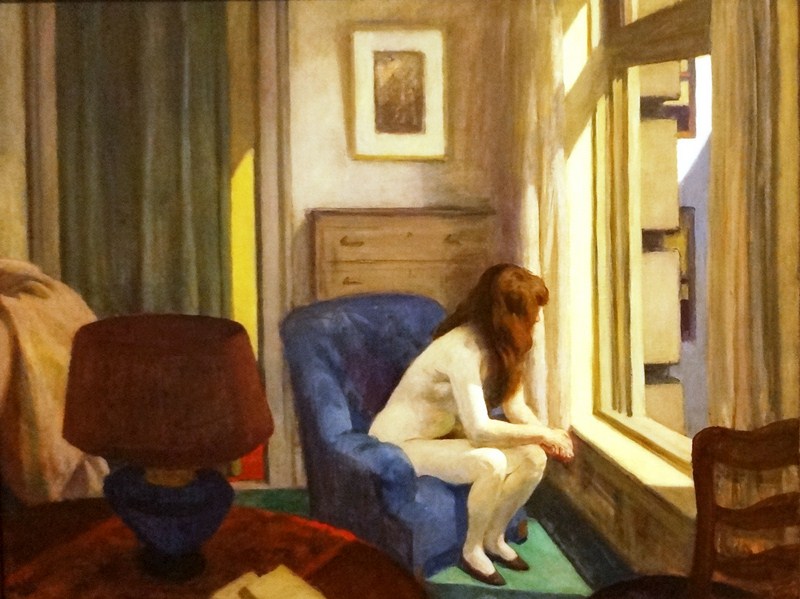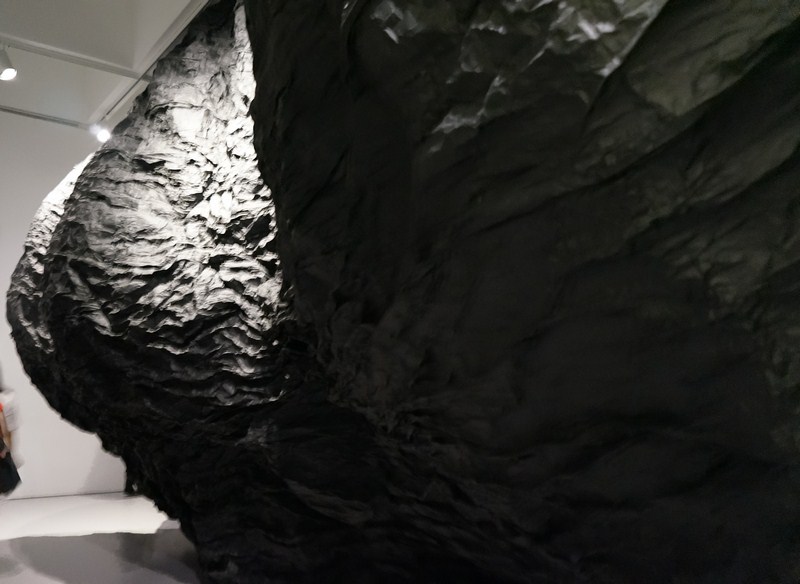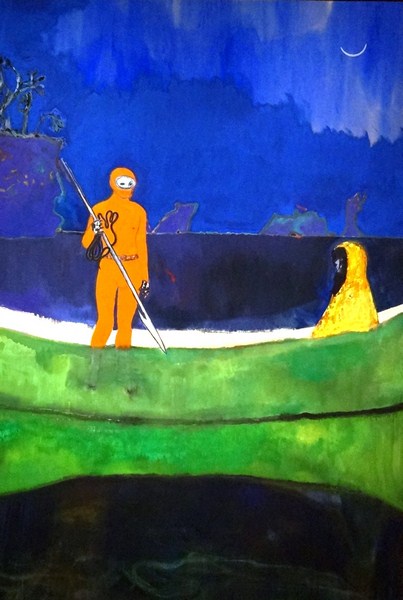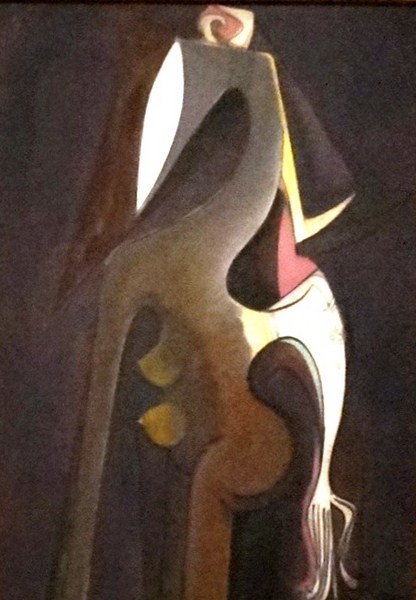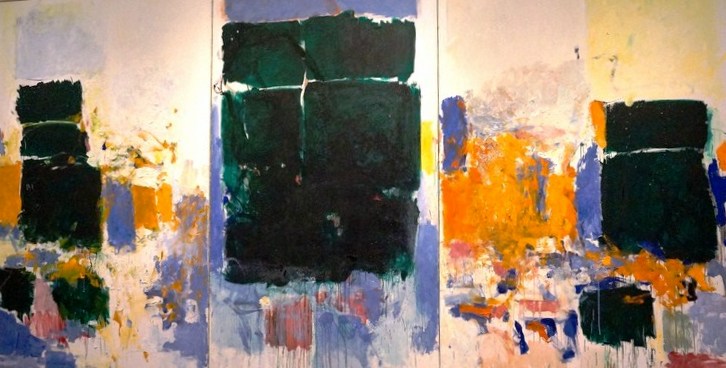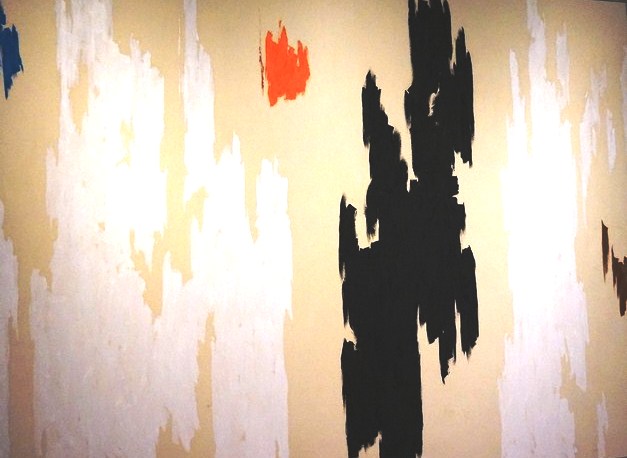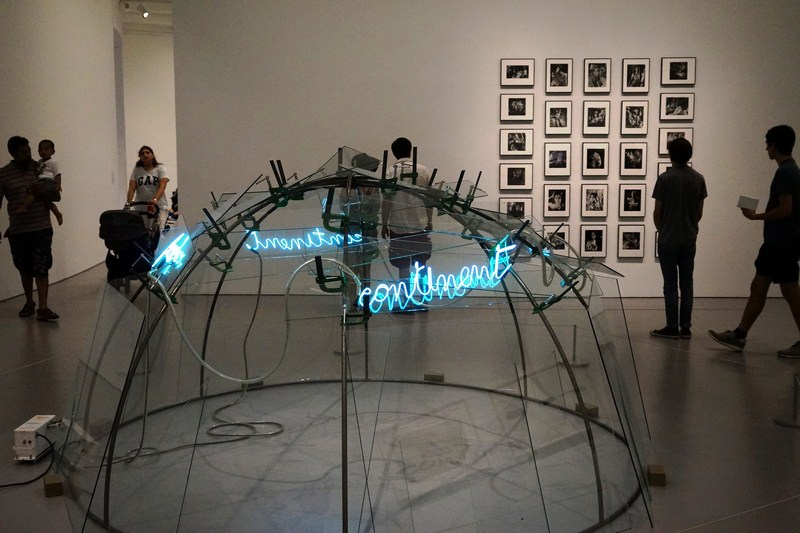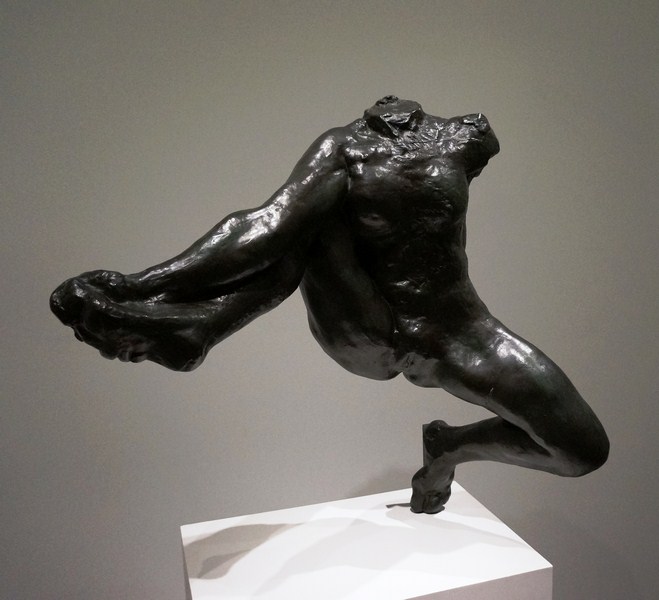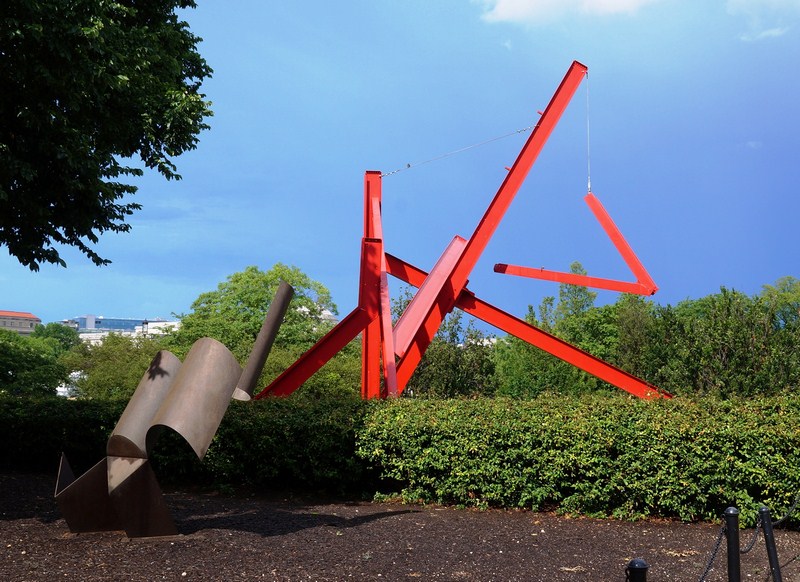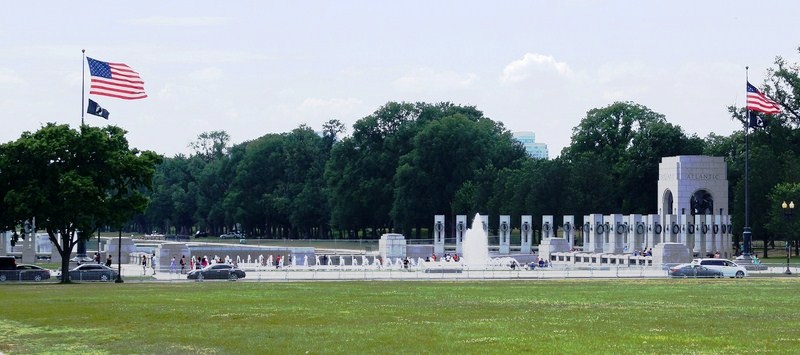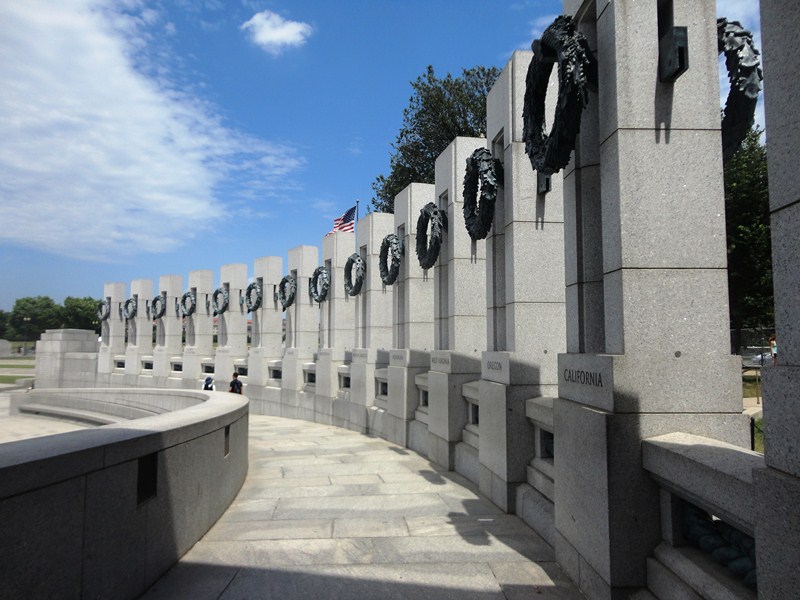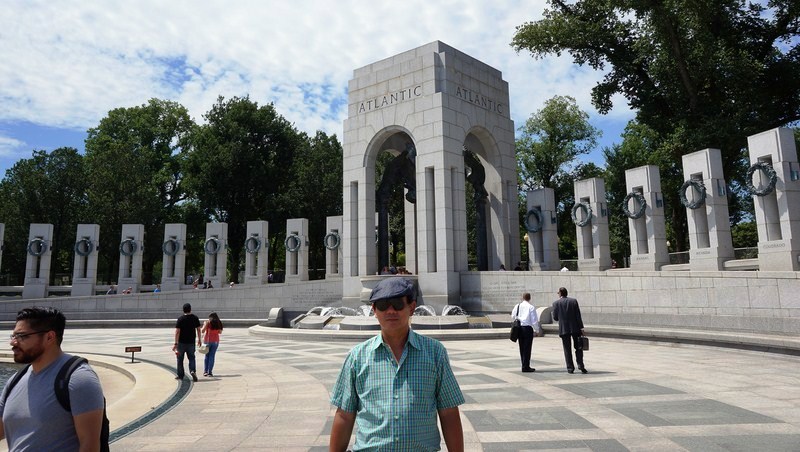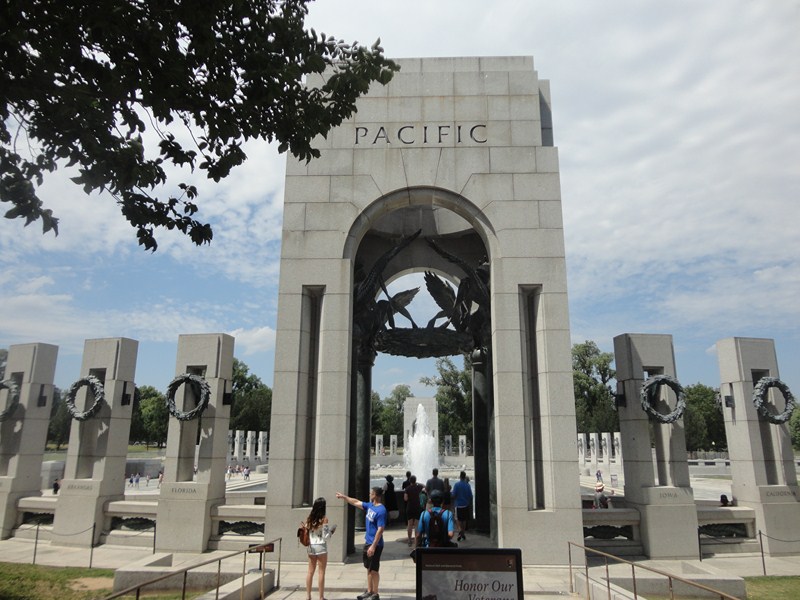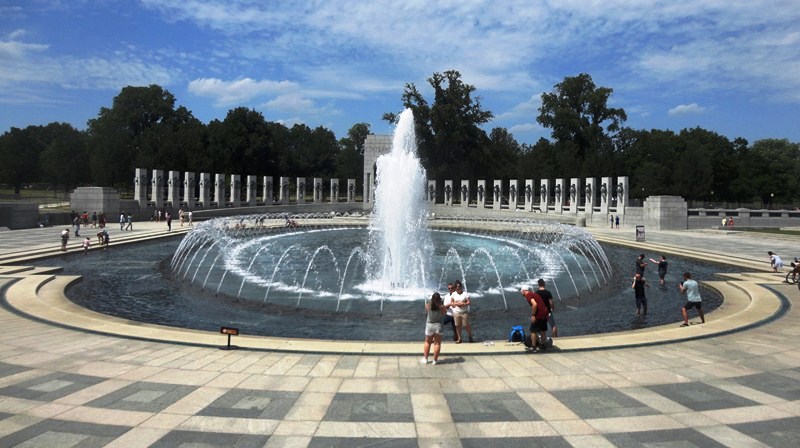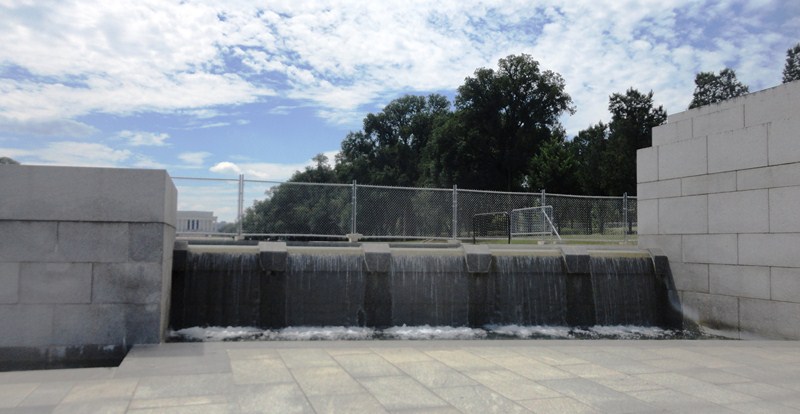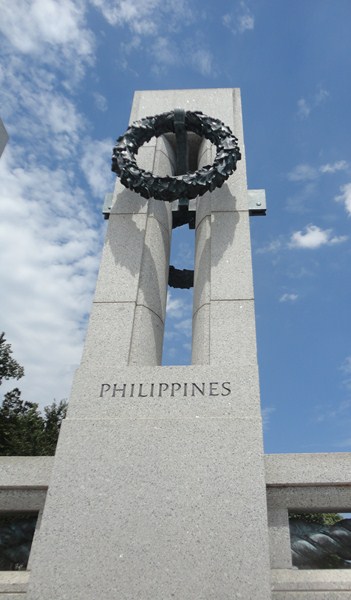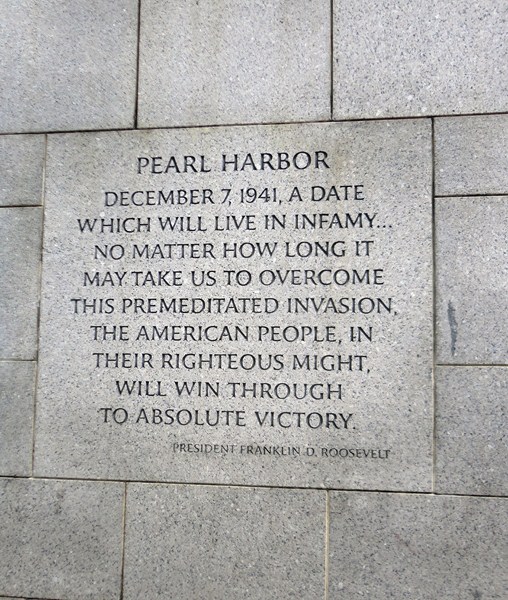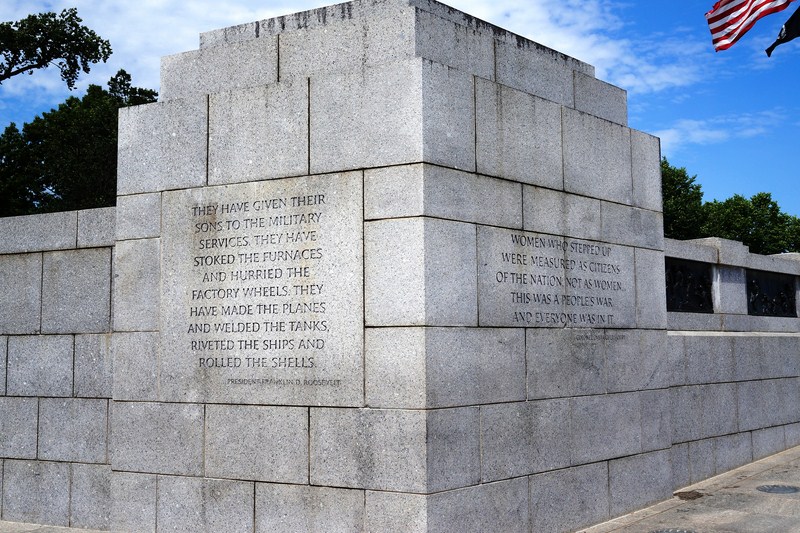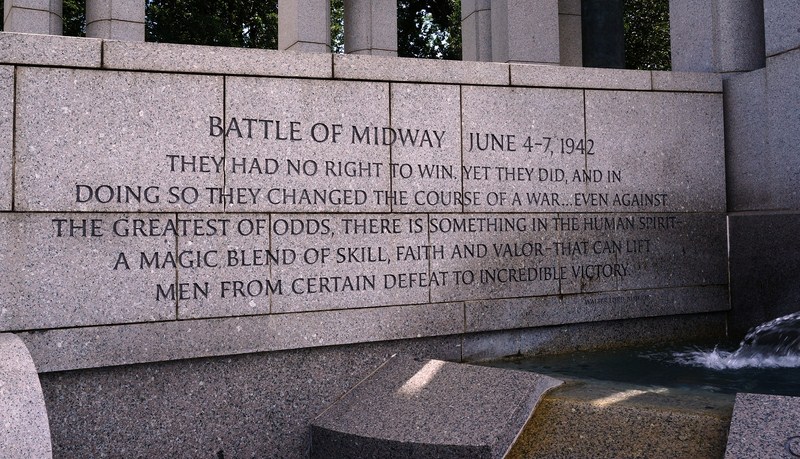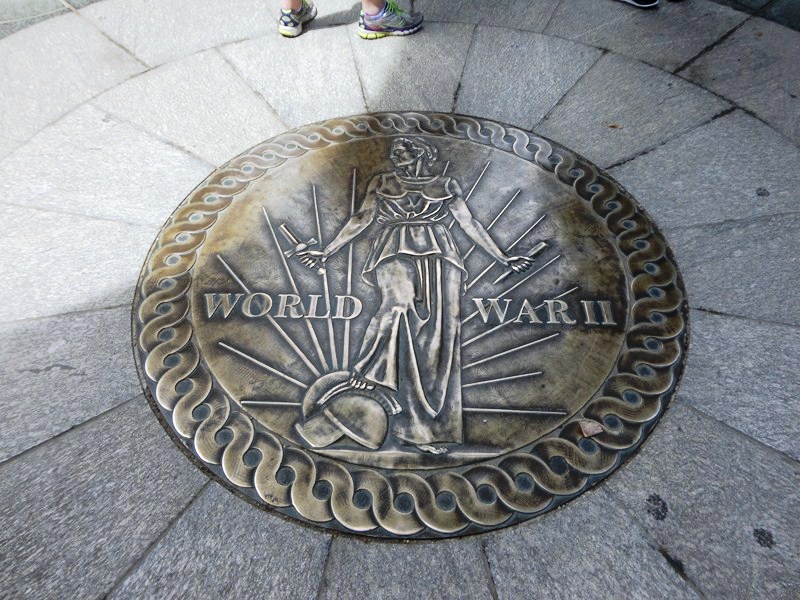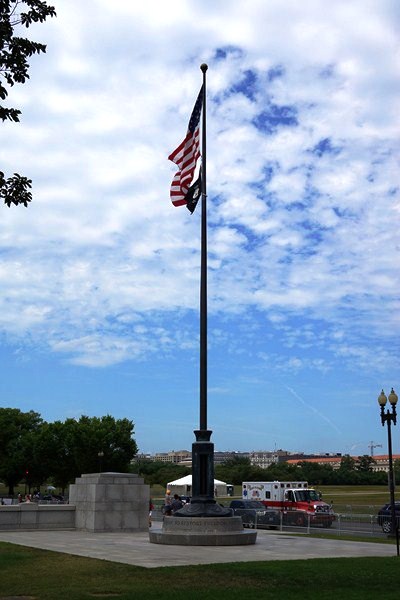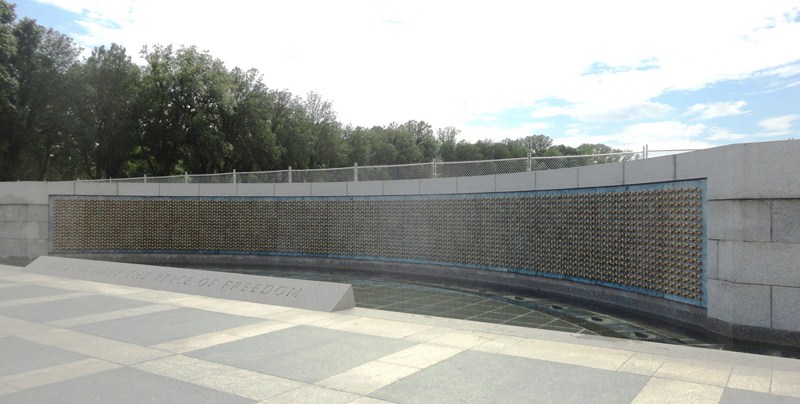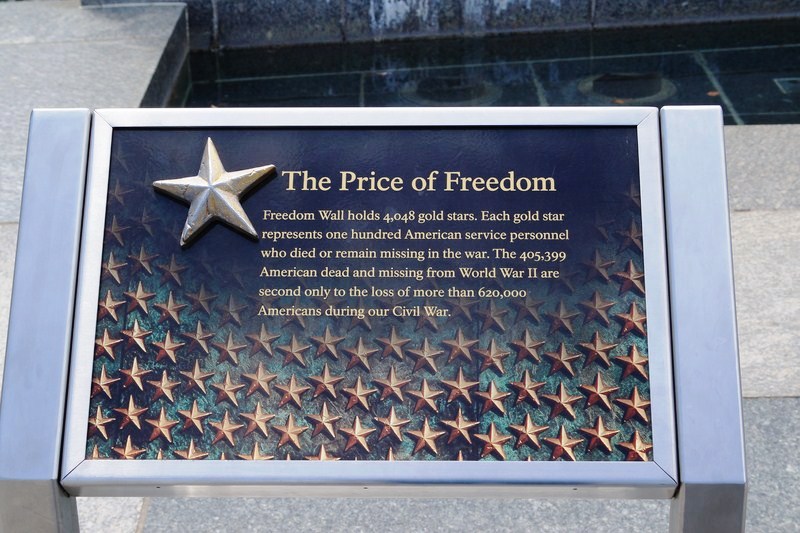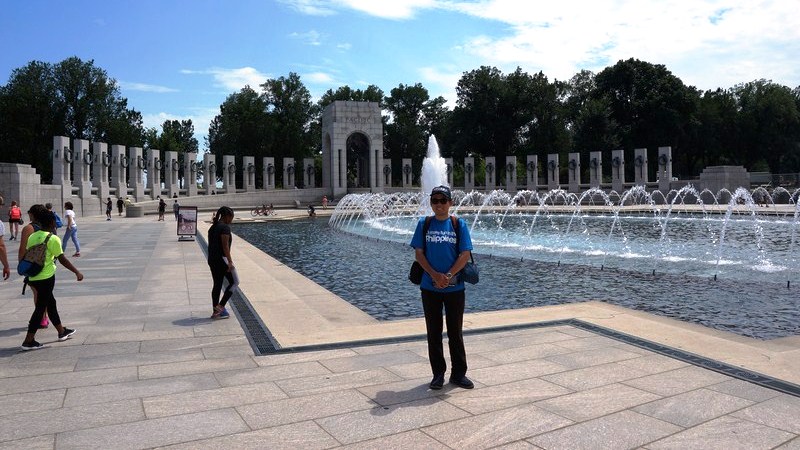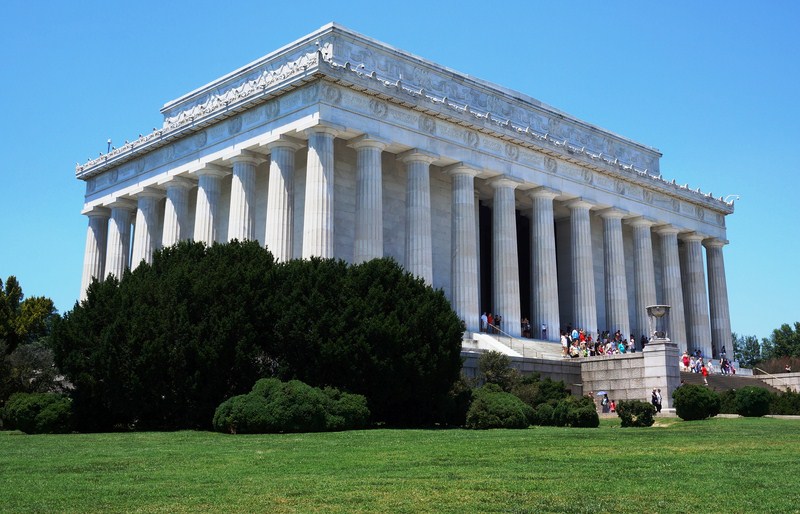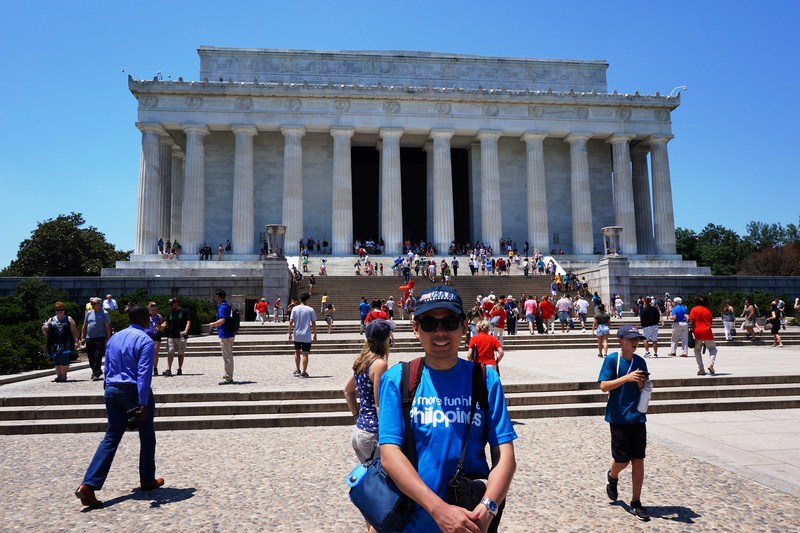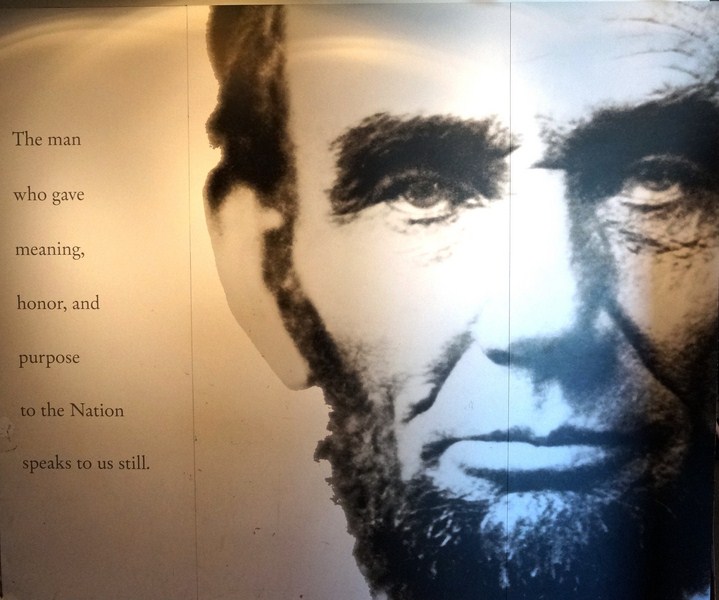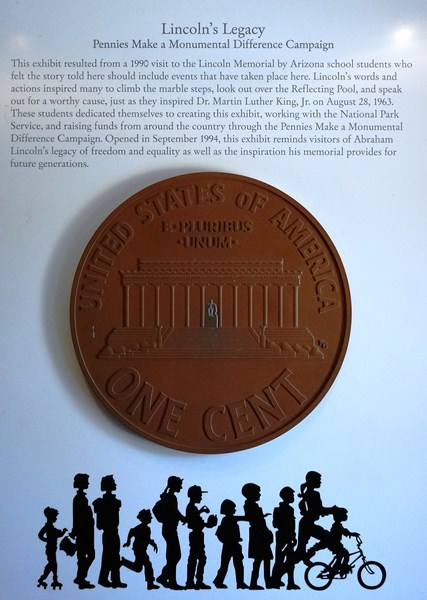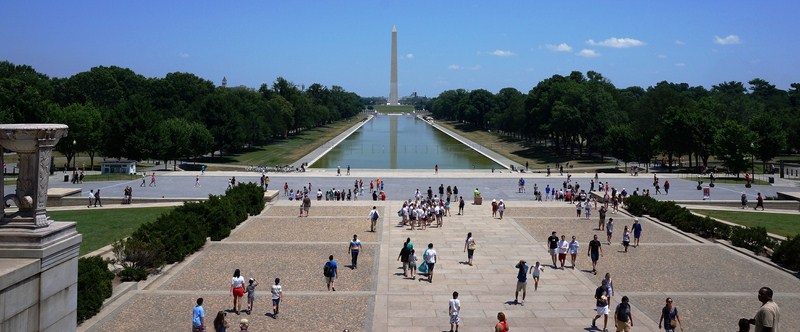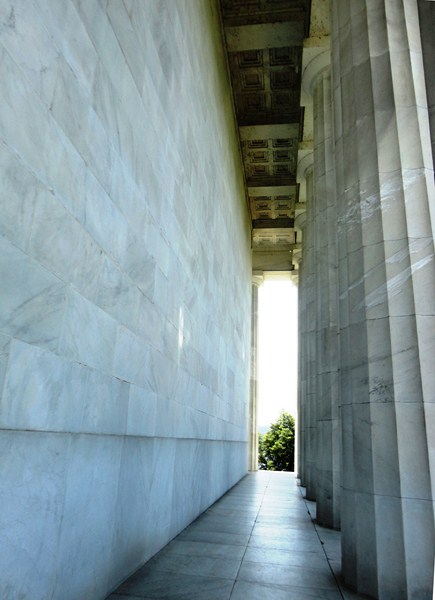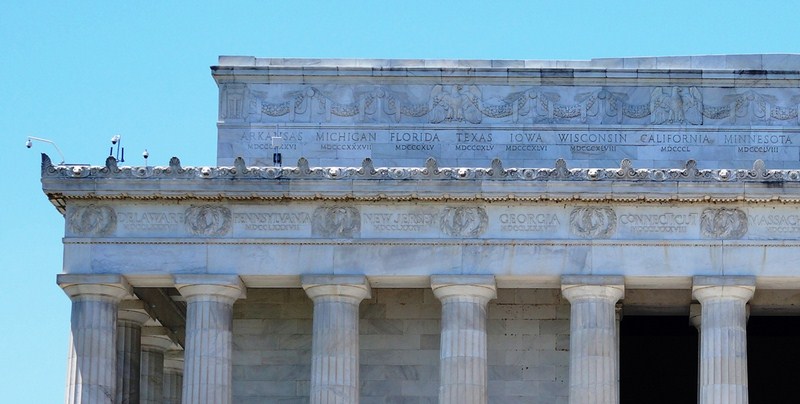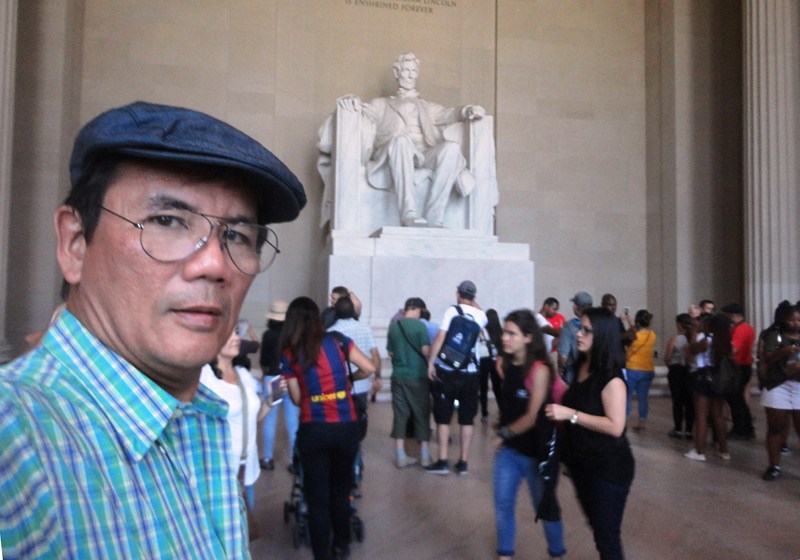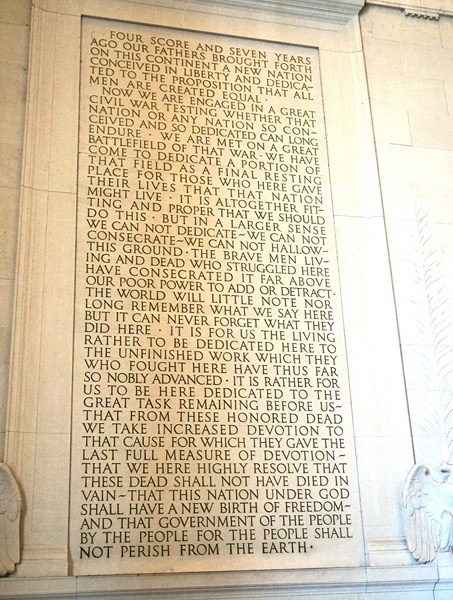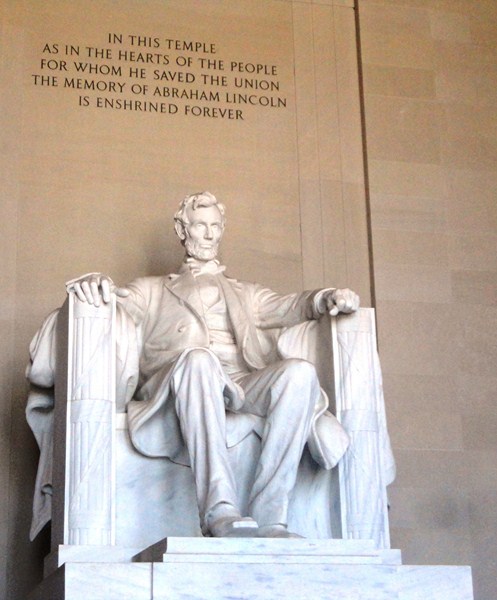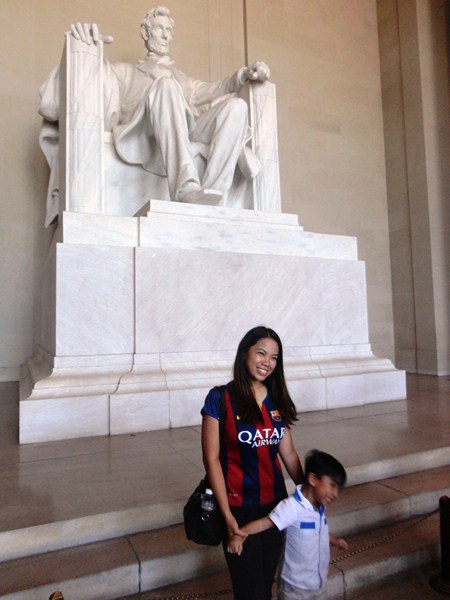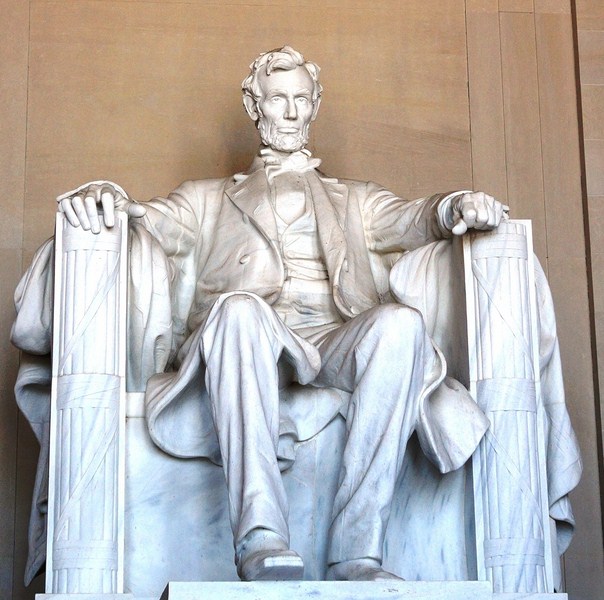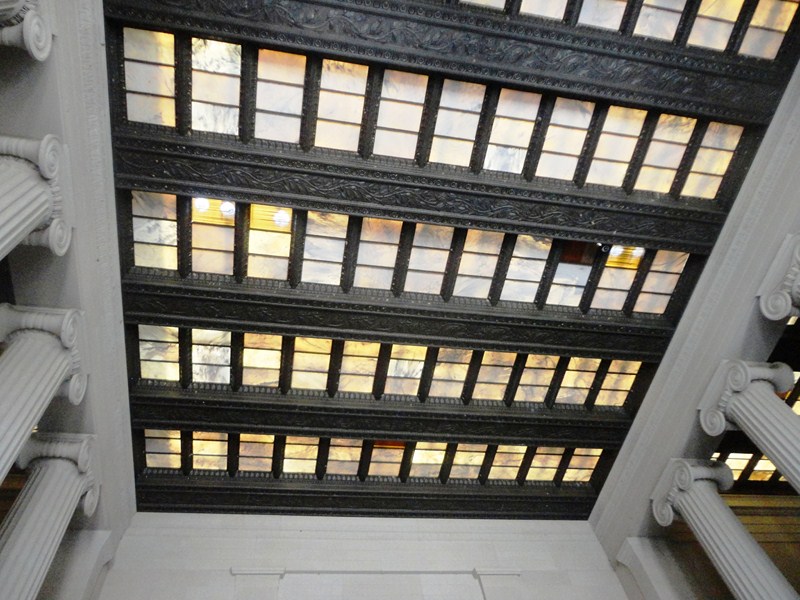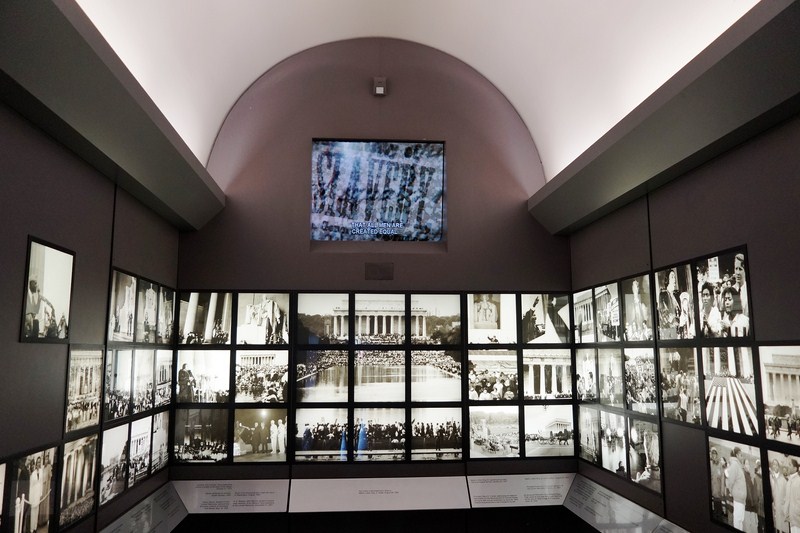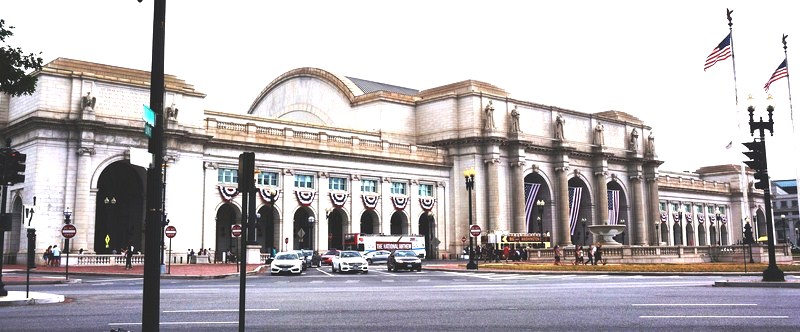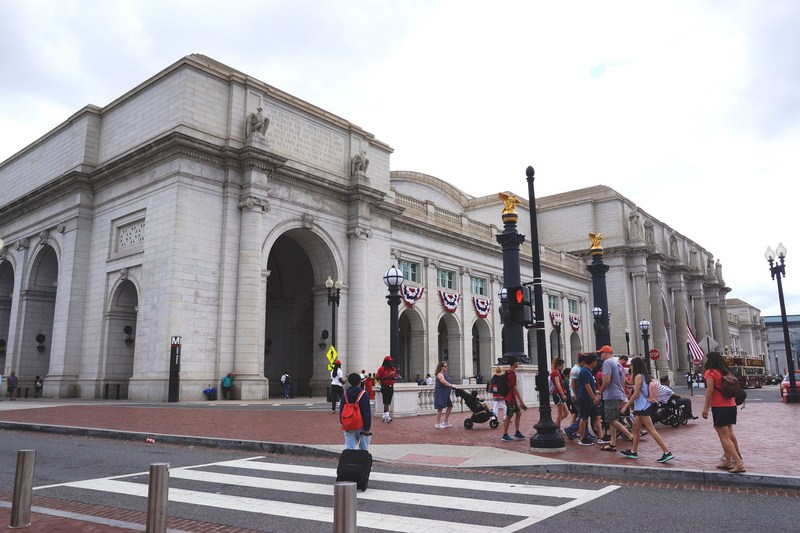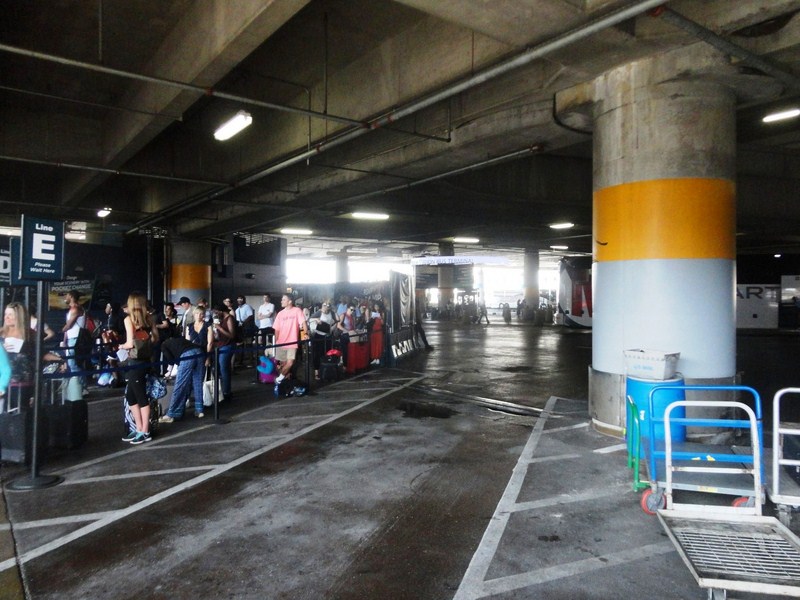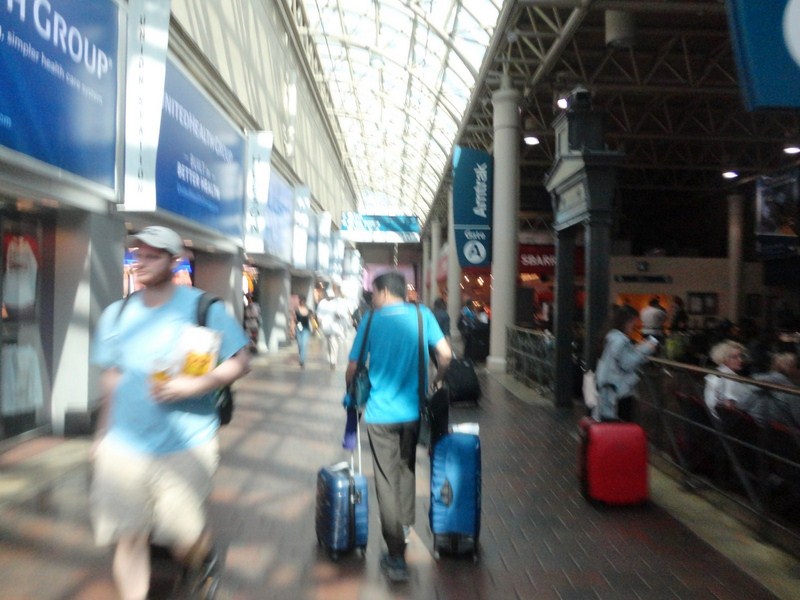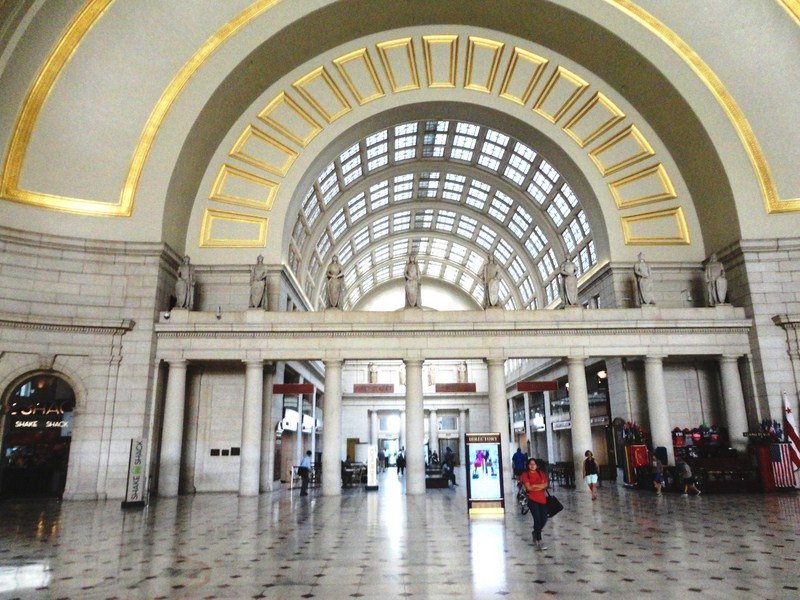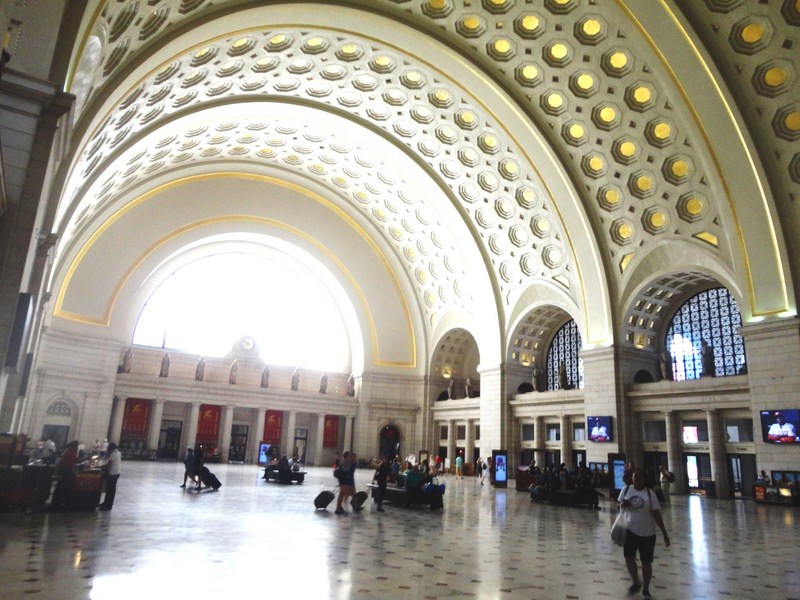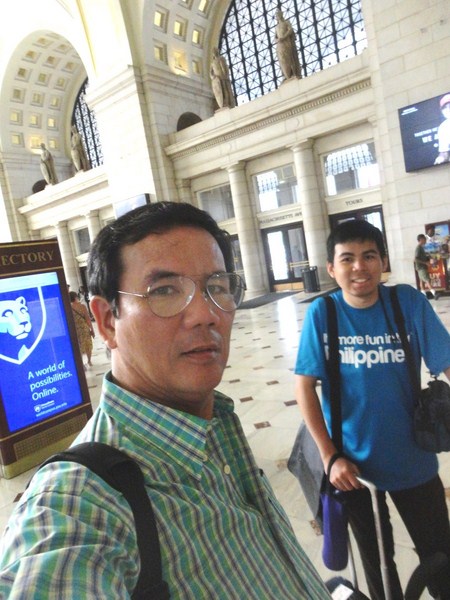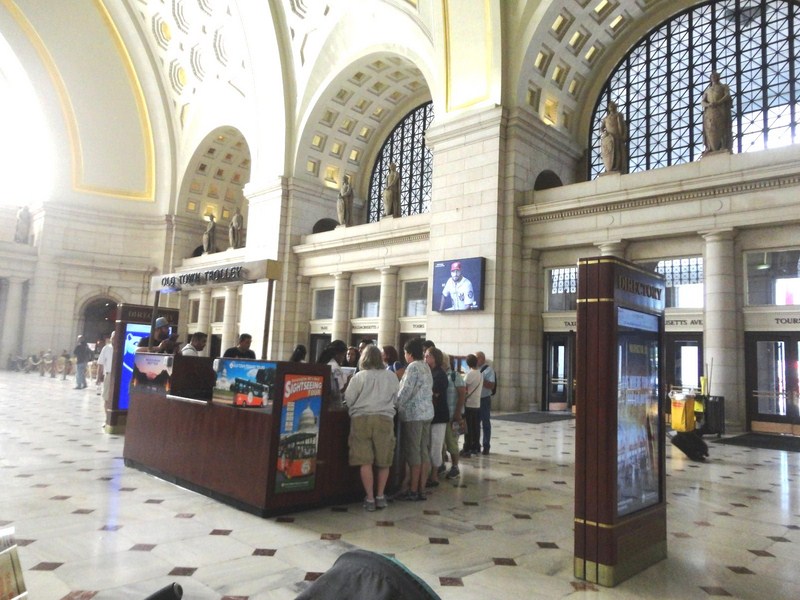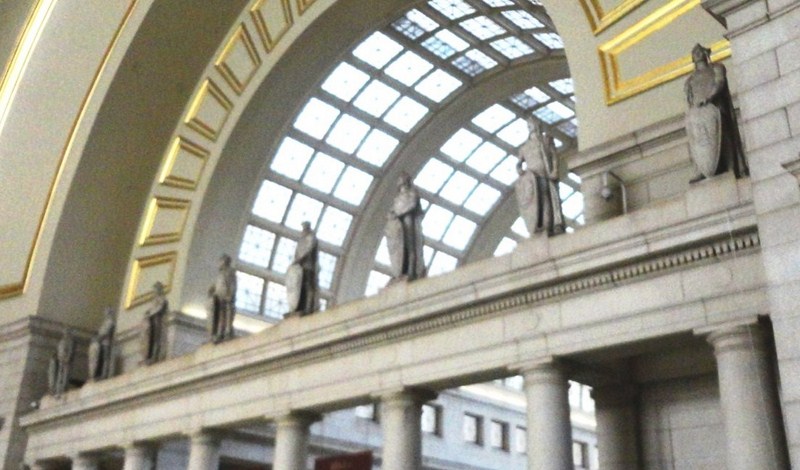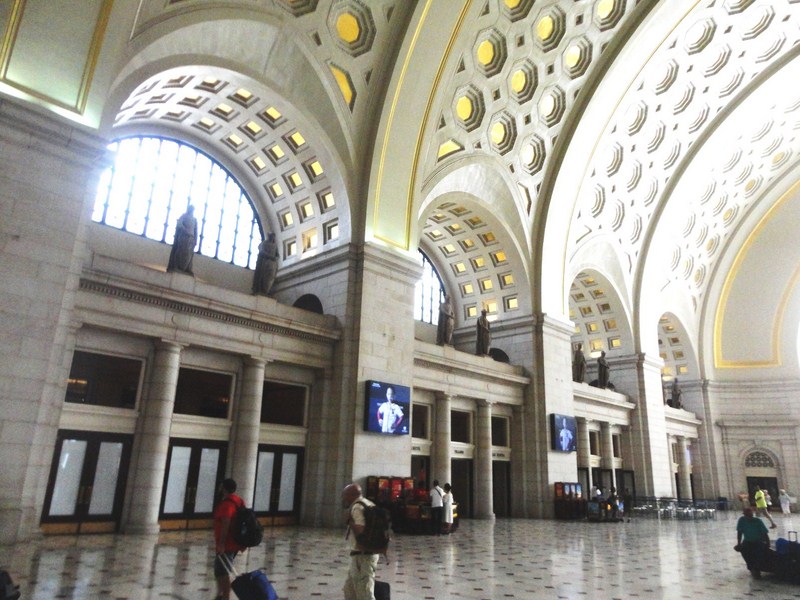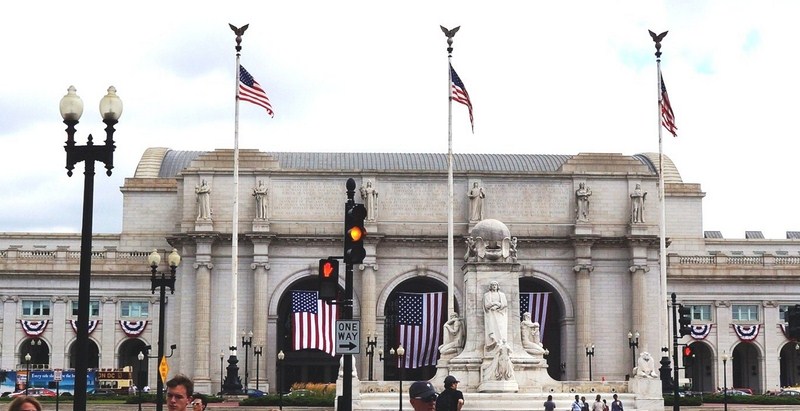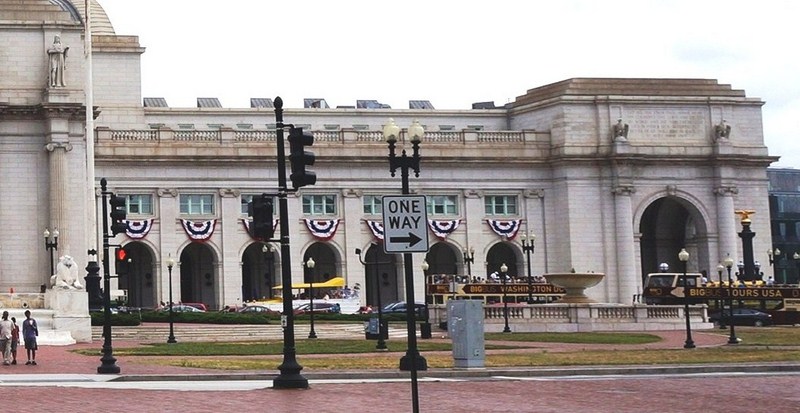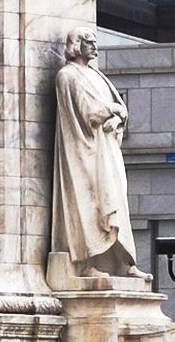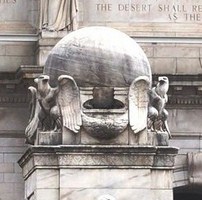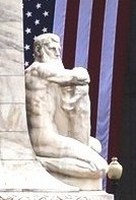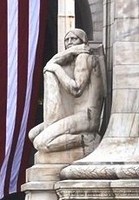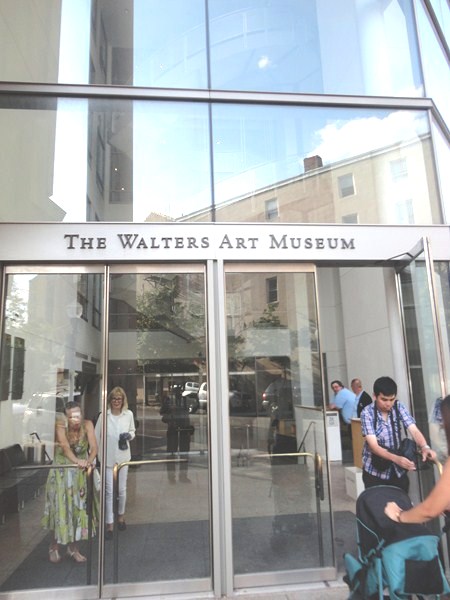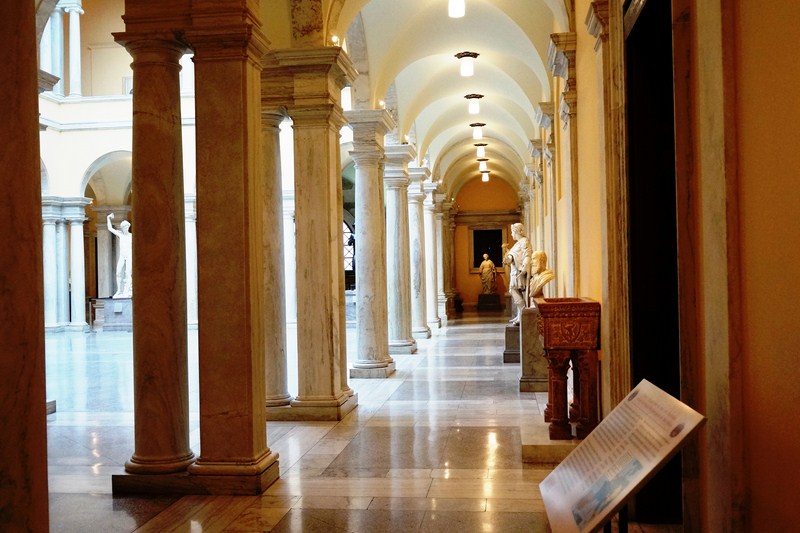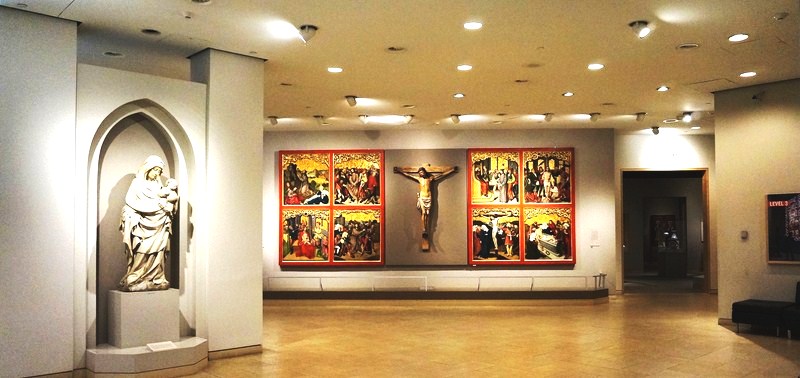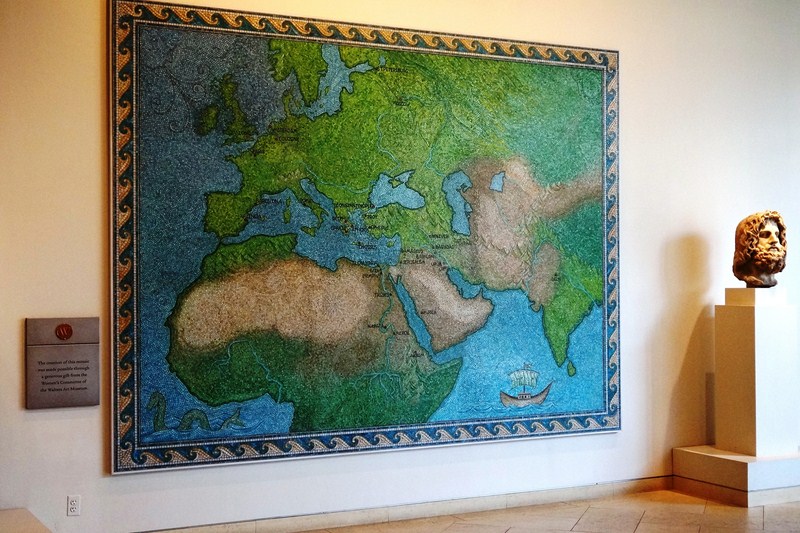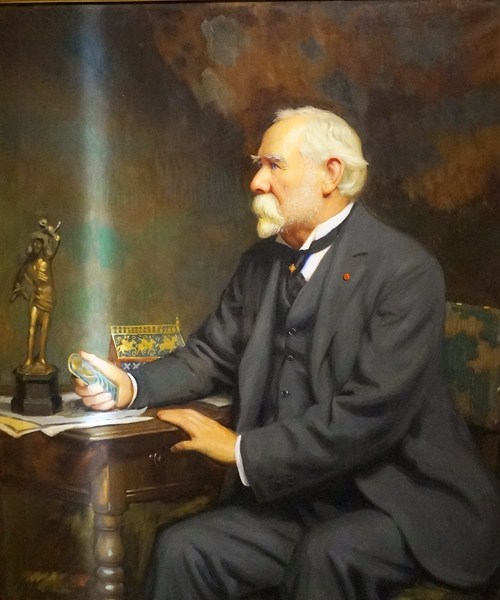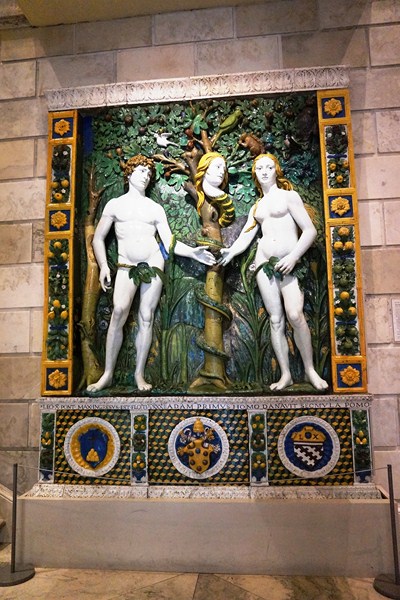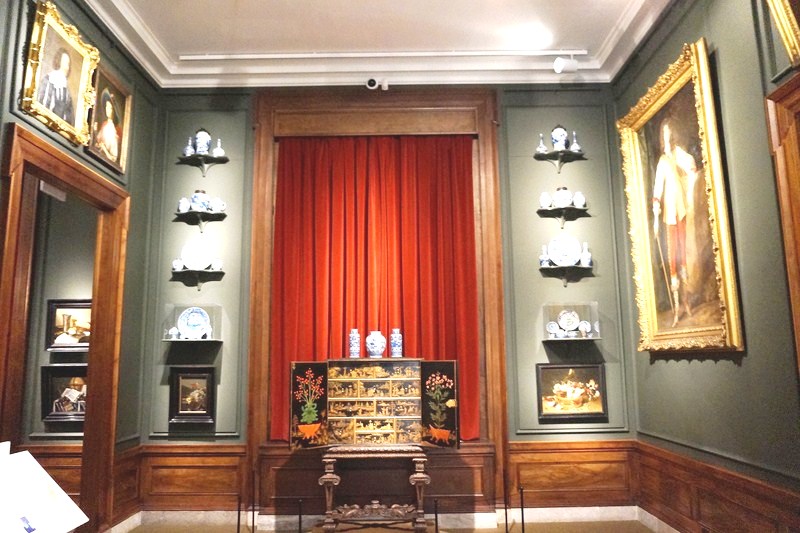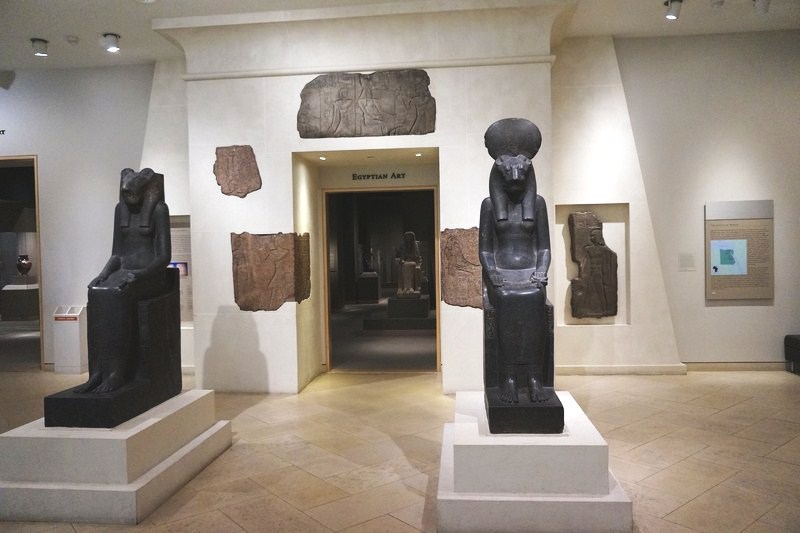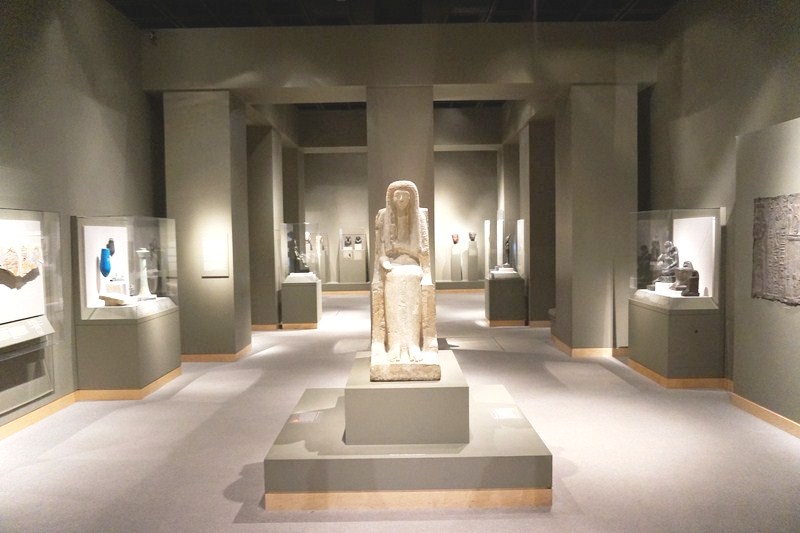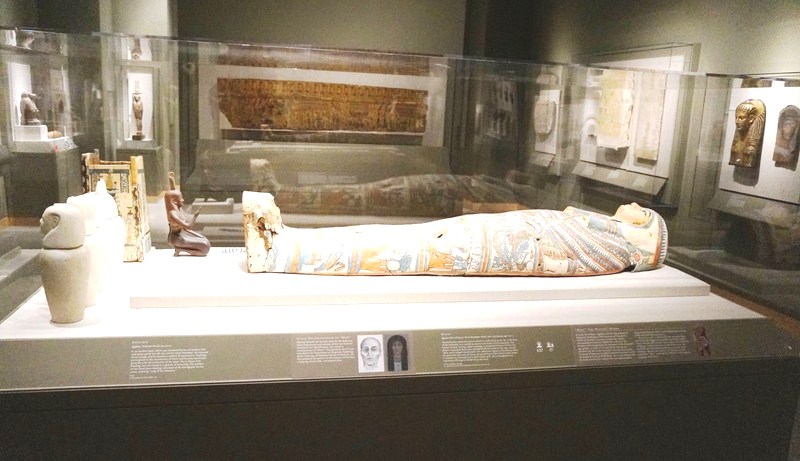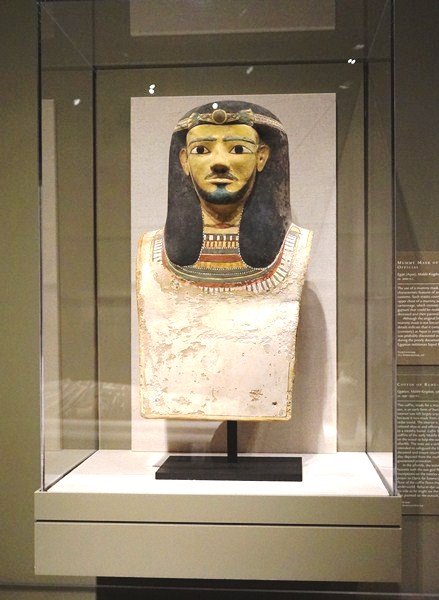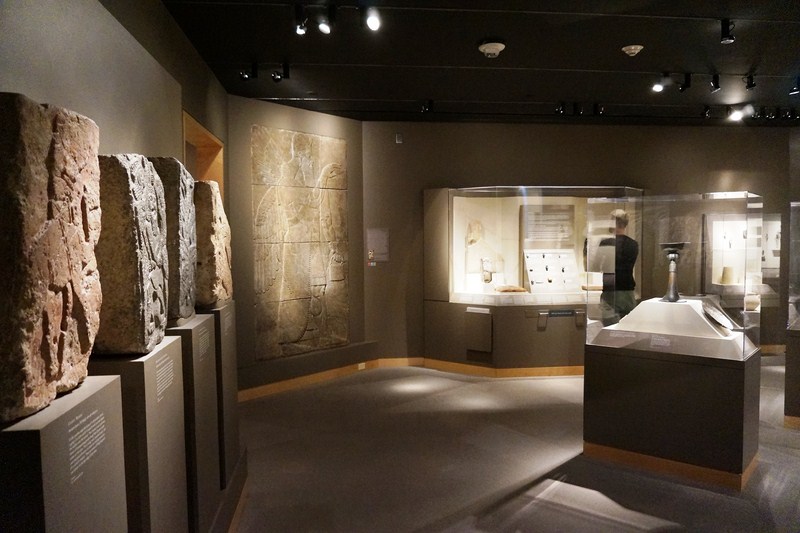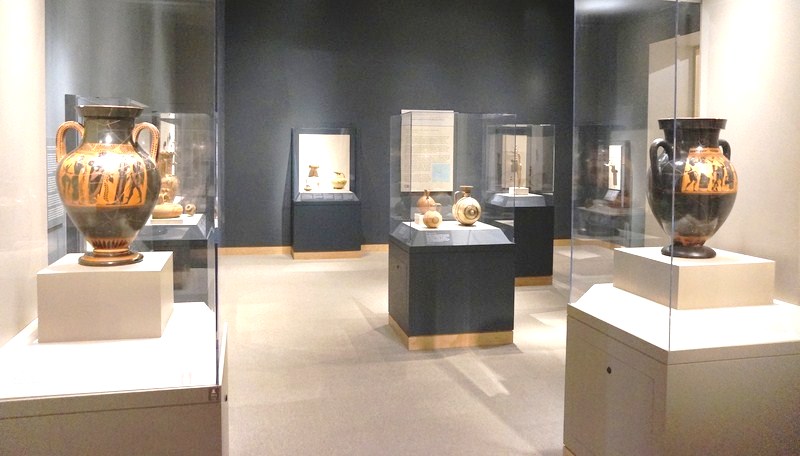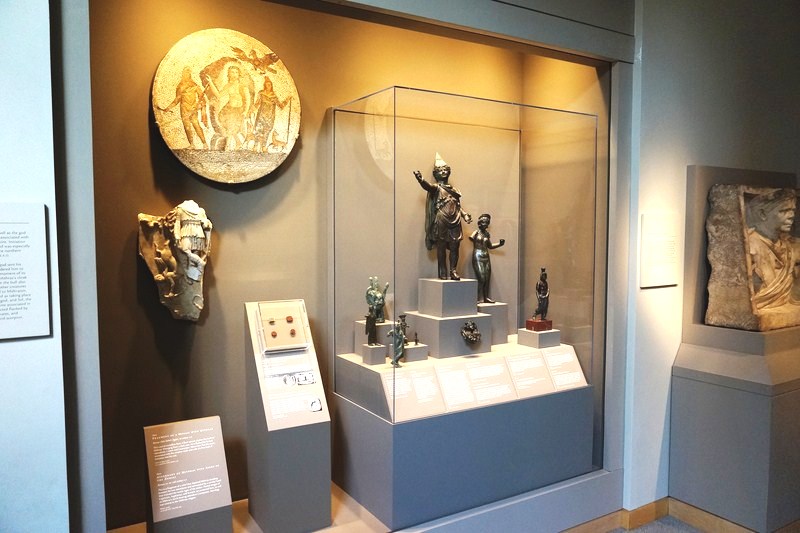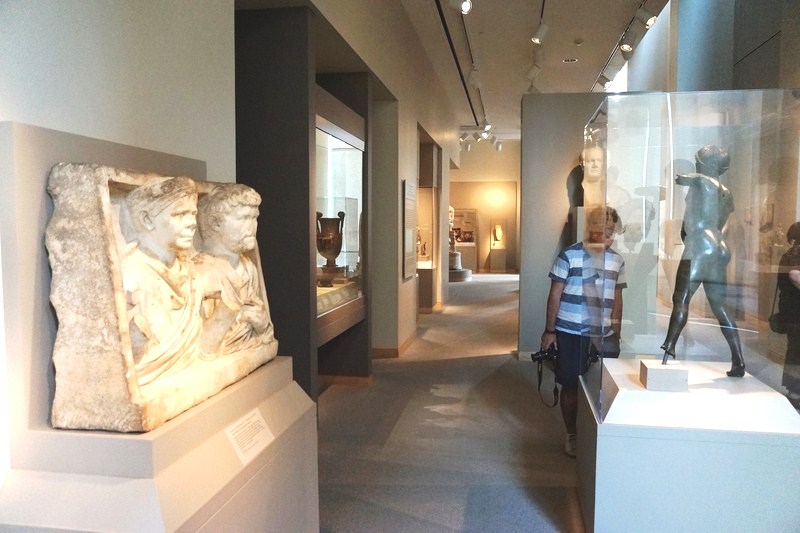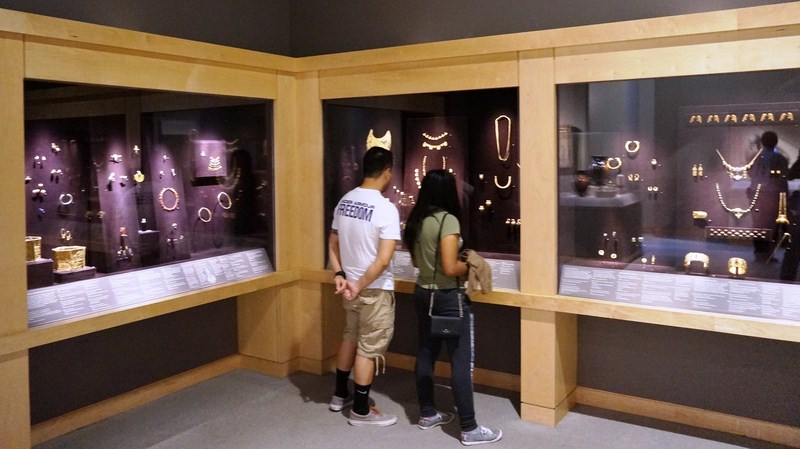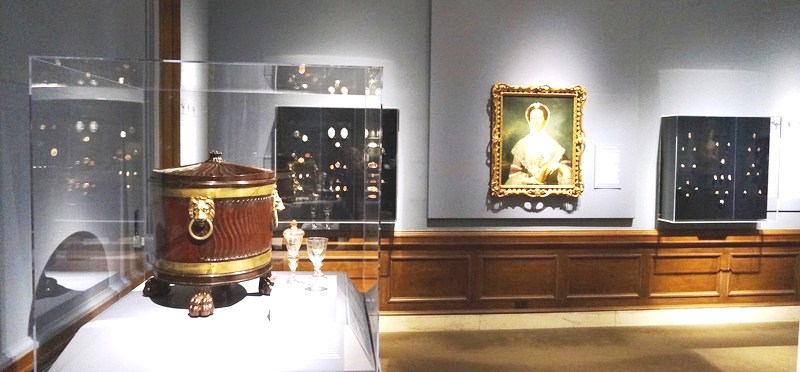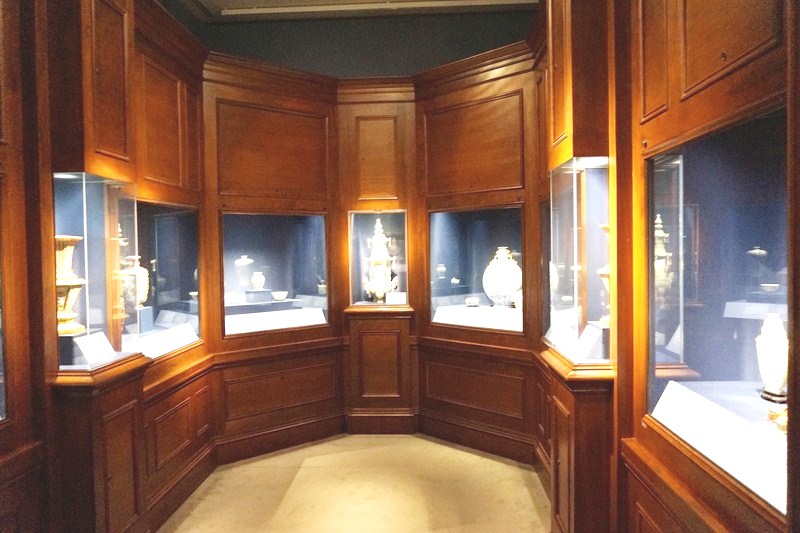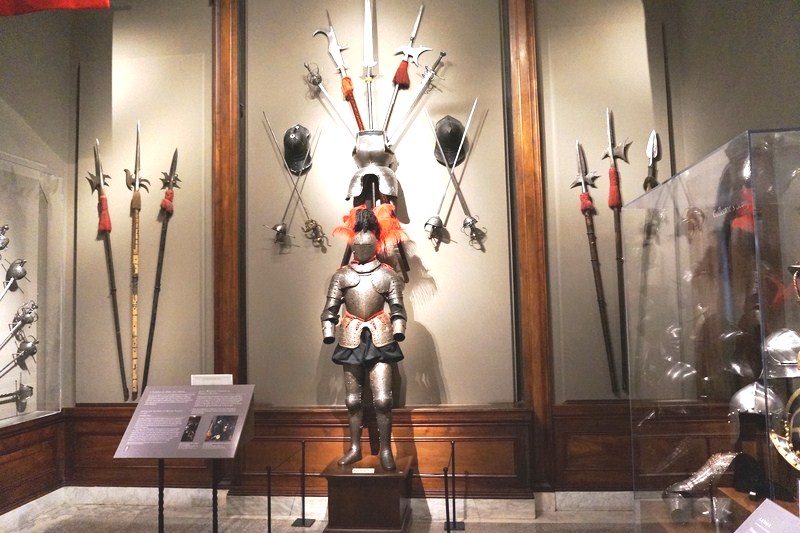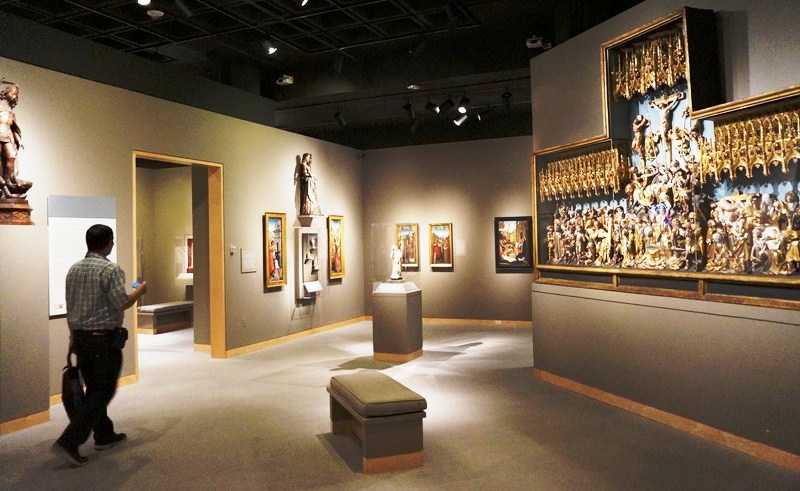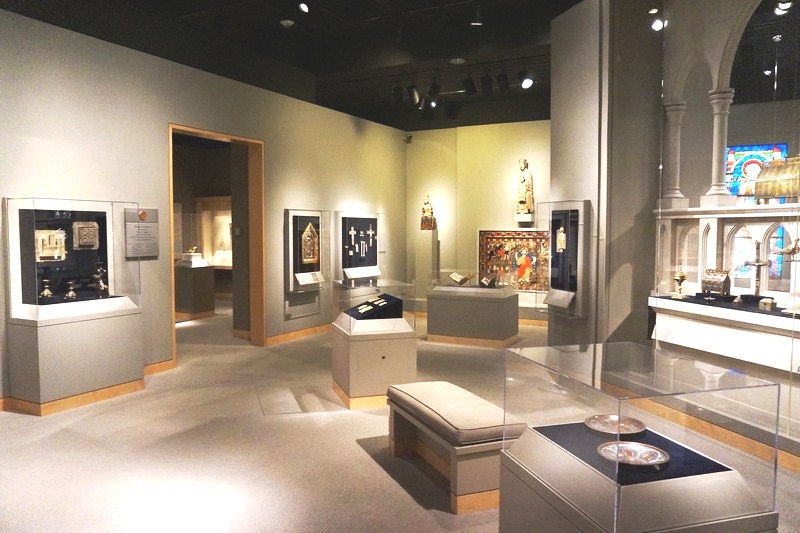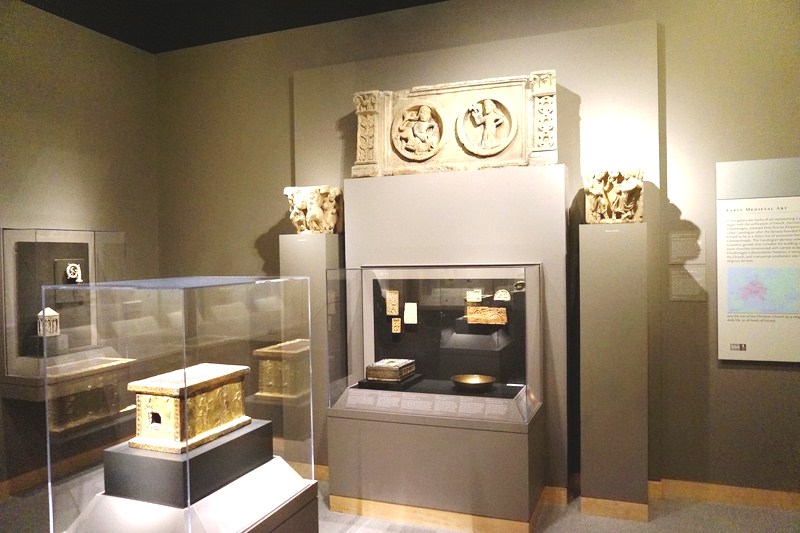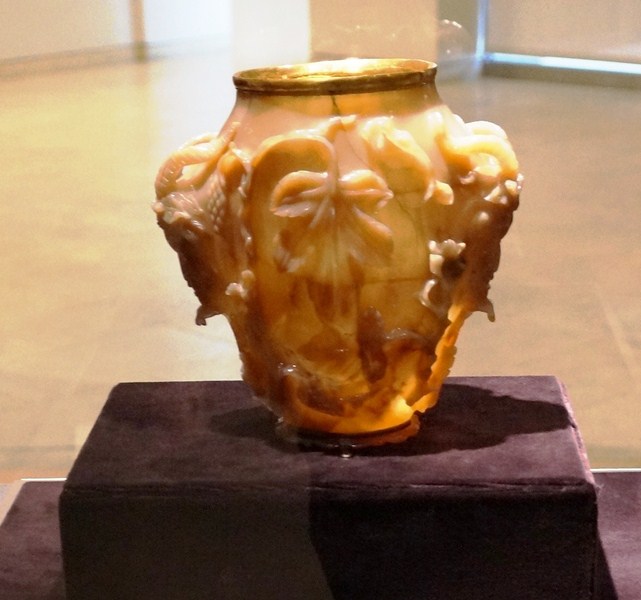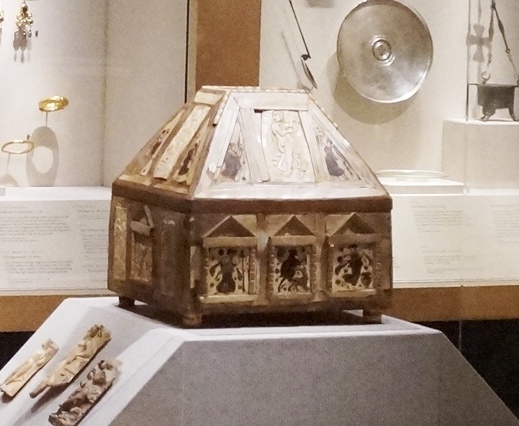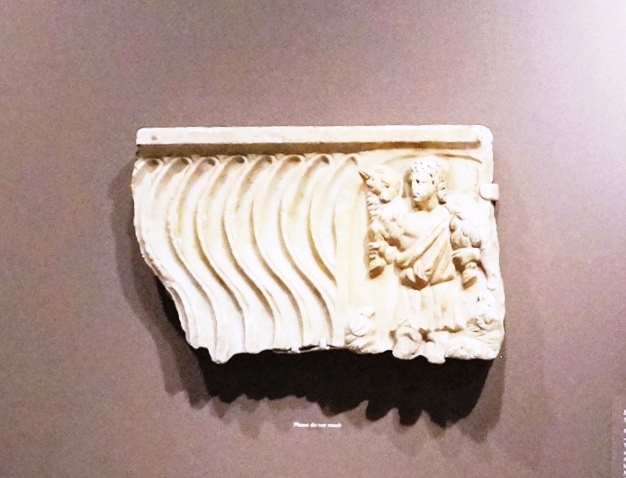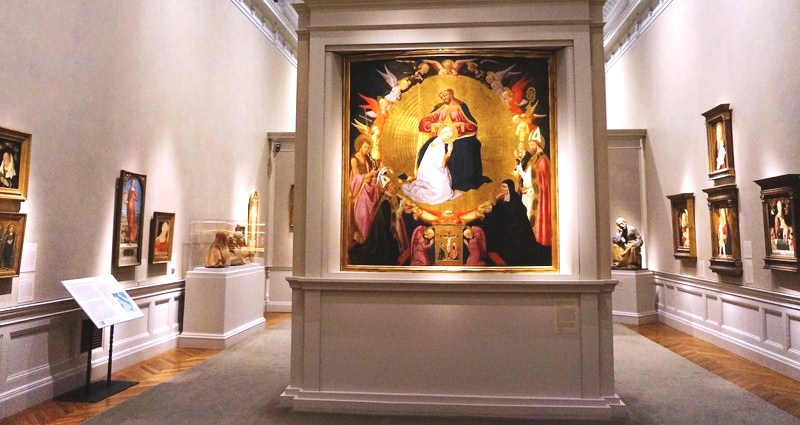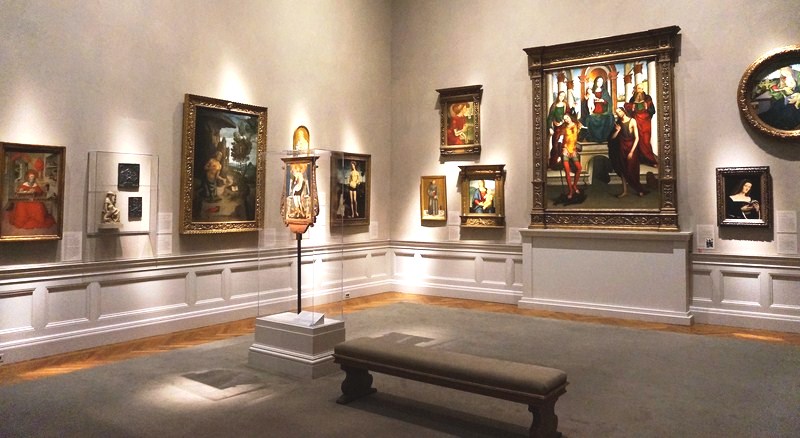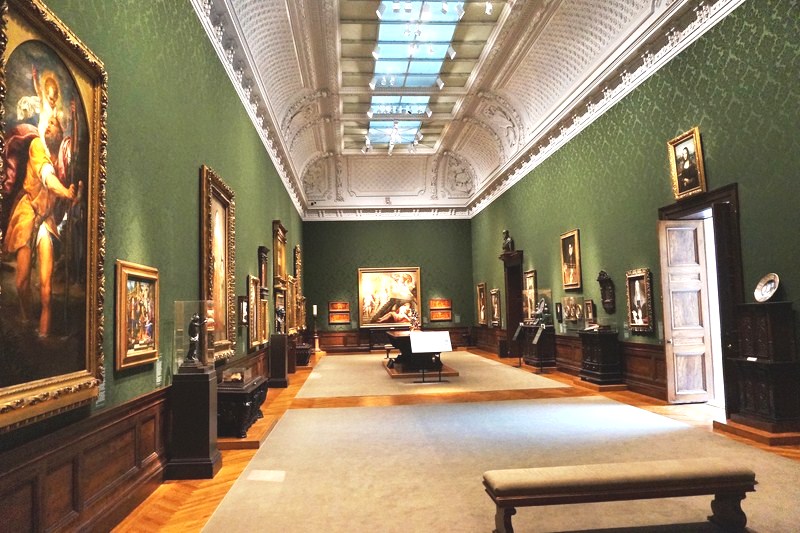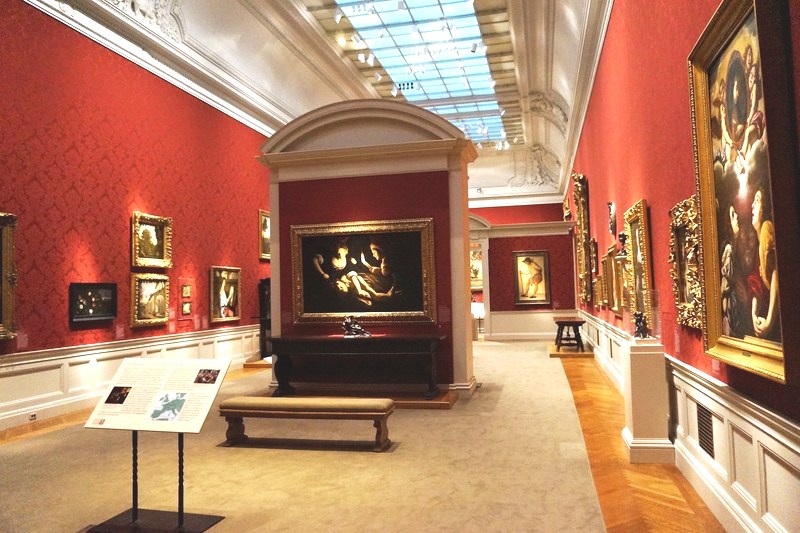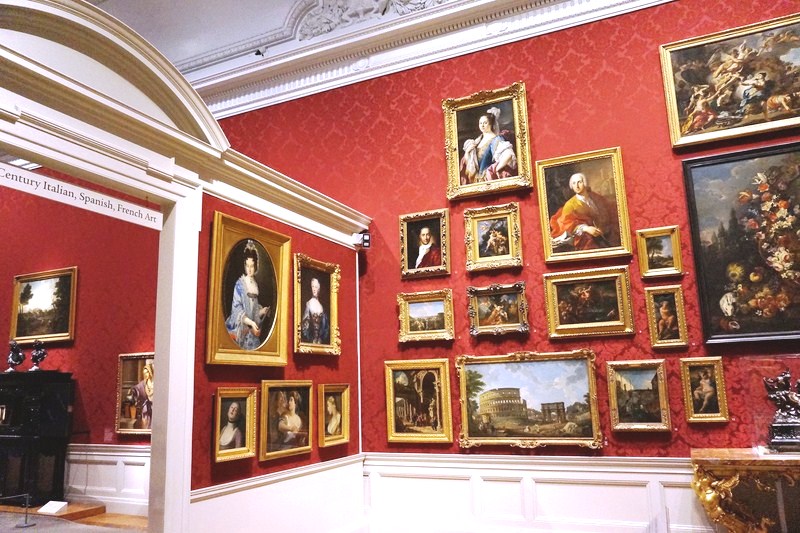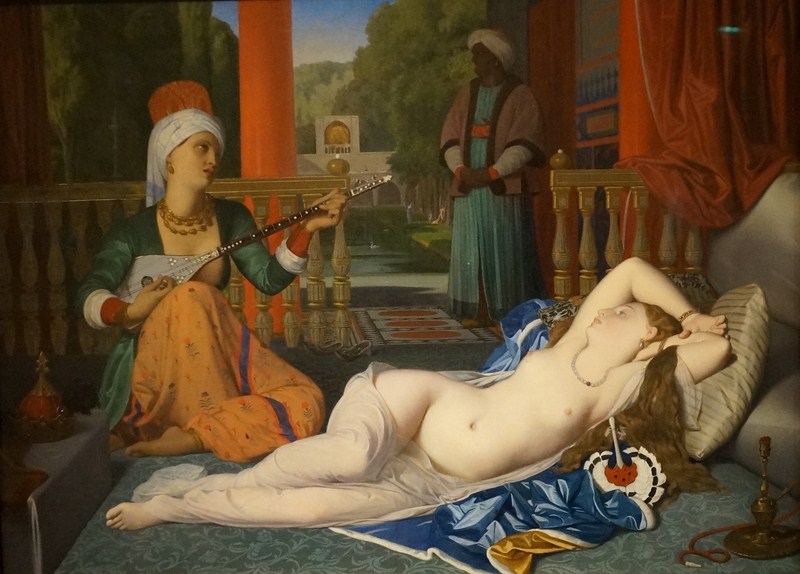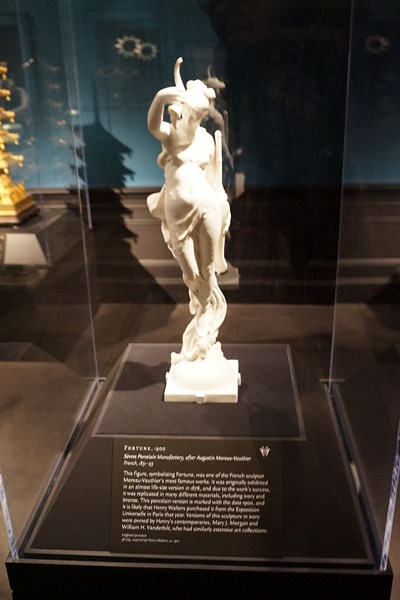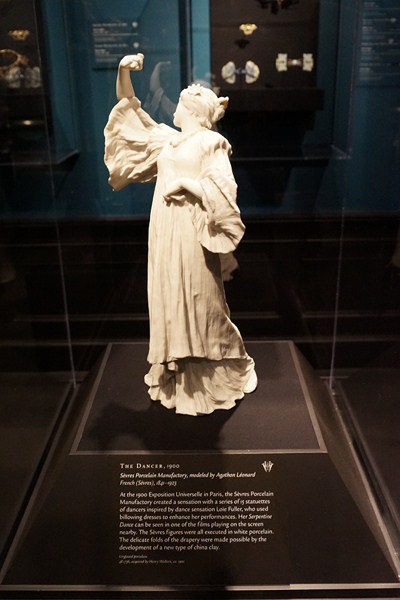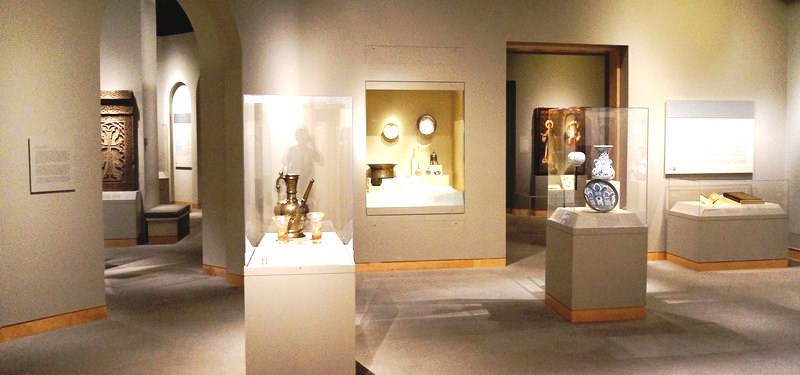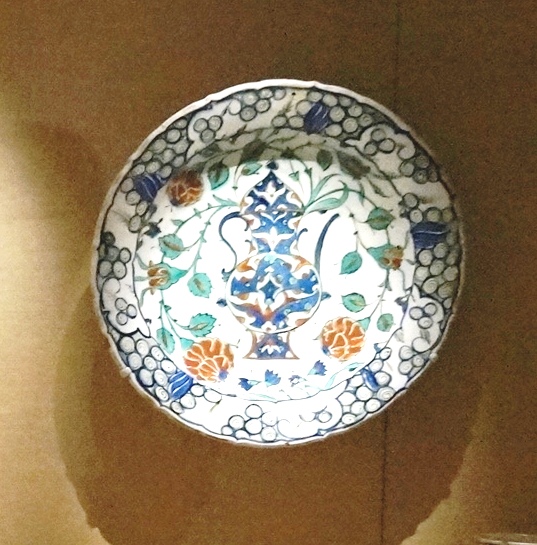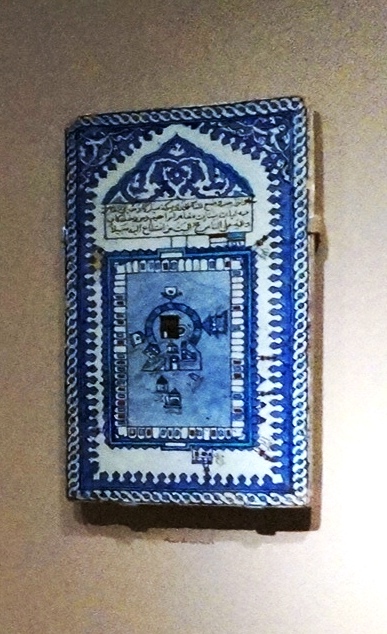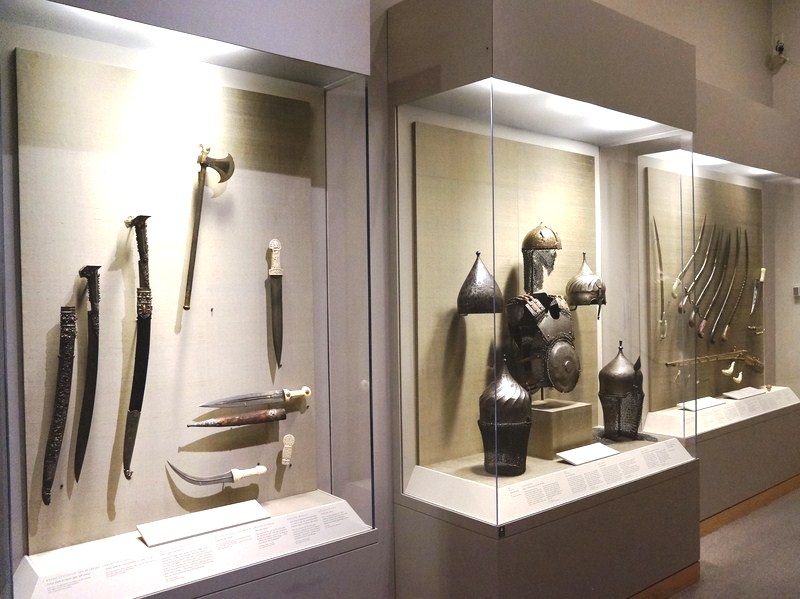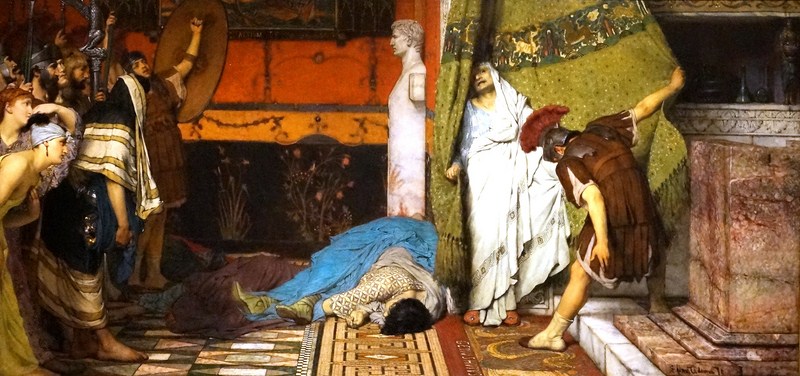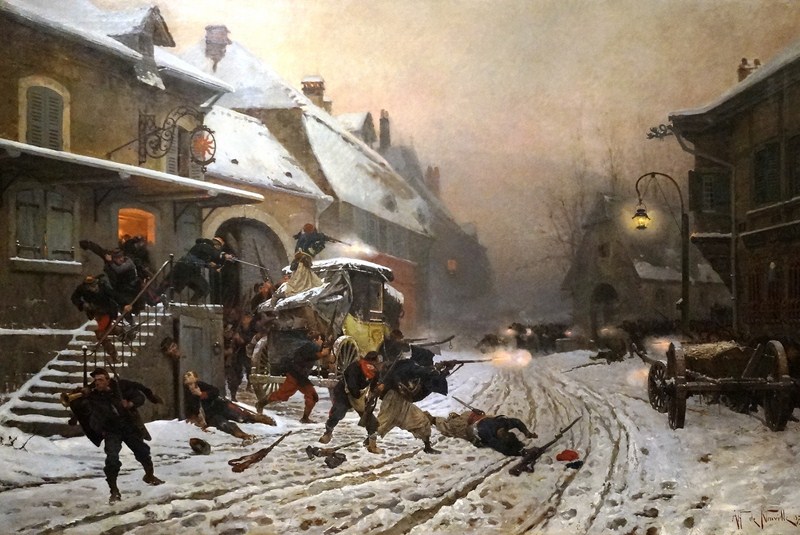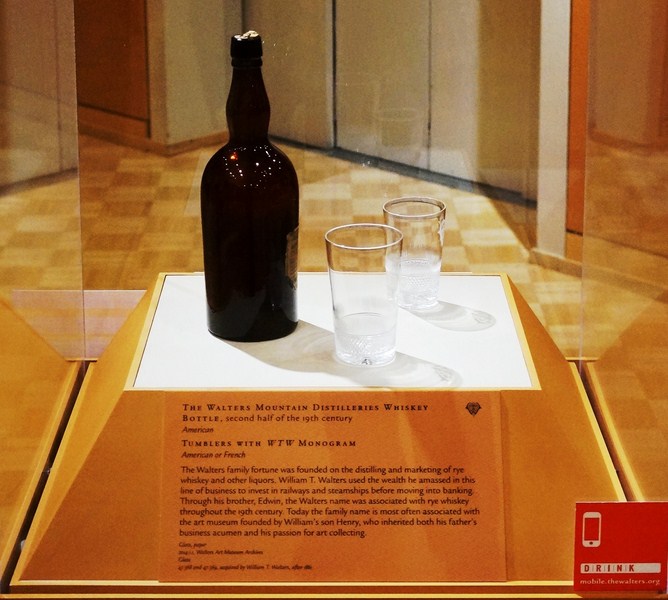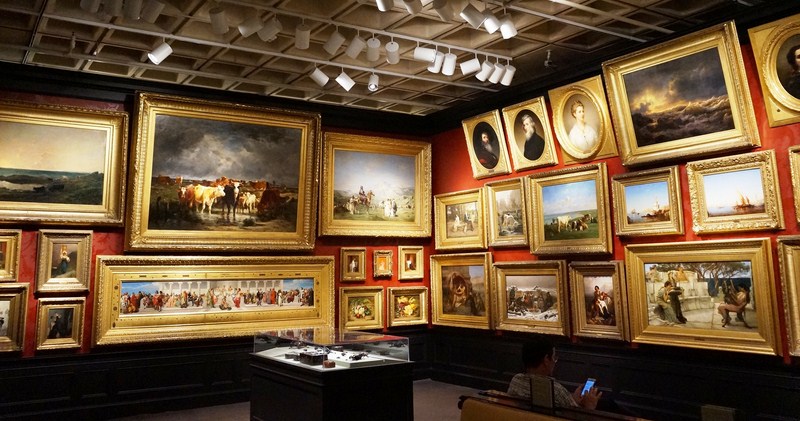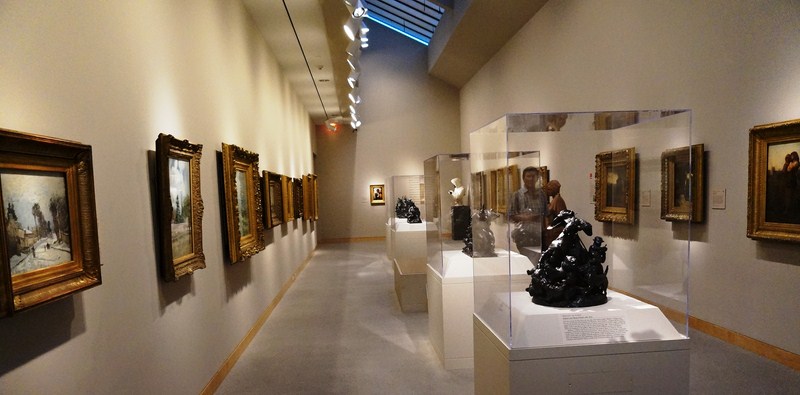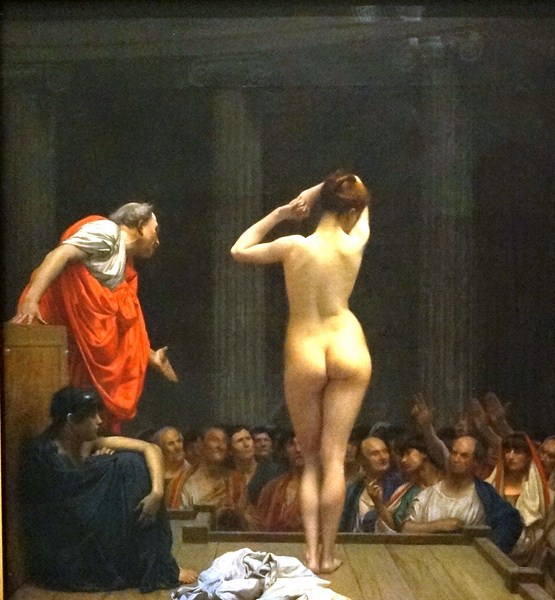The Donald W. Reynolds Center for American Art and Portraiture, actually a collection of institutions housed in the historic, gloriously renovated Old Patent Office Building, served as one of the earliest United States Patent Office buildings. Here, Neo-Classicism meets 21st-century exuberance.
Covering an entire city block defined by F and G Streets and 7th and 9th Streets NW, just south of Chinatown in downtown Washington, it now houses two Smithsonian Institution museums – the National Portrait Gallery and the Smithsonian American Art Museum.
It also houses the Lawrence A. Fleischman Gallery of the Archives of American Art; an art conservation facility (Lunder Conservation Center); an enclosed, 28,000-sq. ft. courtyard (Robert and Arlene Kogod Courtyard); a 20,400 sq. ft. open storage facility (Luce Foundation Center); a new 356-seat underground auditorium (Nan Tucker McEvoy Auditorium) and other operations within the Old Patent Office complex. By the end of 2007, more than 786,000 people had visited the two museums and, 10 years later, during the time of my visit, 1.3 million people have visited the place.
Check out “Donald W. Reynolds Center for American Art – National Portrait Gallery” and Portraiture and “Donald W. Reynolds Center for American Art and Portraiture – Smithsonian American Art Museum”
Before it became what it is today, through the Civil War and into the post-war period, the building was once home to many early government departments. It was used as a hospital, and The Bureau of Indian Affairs, the General Land Office, and the Bureau of Pensions jointly occupied the building with the Patent Office.
Both Clara Barton and American poet Walt Whitman worked as nurses there during the American Civil War. From 1854 to 1857, Barton worked in the building as a clerk to the Patent Commissioner, the first woman federal employee to receive equal pay. From January 24 to June 30, 1865, Waltman, who frequented “that noblest of Washington buildings” and read to wounded men, worked in Bureau of Indian Affairs before being fired for having a copy of Leaves of Grass in his desk.
Here is the historical timeline of the building:
- In 1836, construction of the building was started.
- In 1851, architect Robert Mills was summarily dismissed as Congressional committees questioned his competence and his insistence on design changes that inserted unnecessary supporting columns and tie-rods. Construction continued under the direction of Thomas U. Walter, one of Mills’ harshest critics
- During the Civil War, the building was turned into military barracks, hospital, and morgue. Wounded soldiers lay on cots in second-floor galleries, among glass cases holding models of inventions that had been submitted with patent applications.
- In 1865, the building was completed
- In March 1965, it was chosen as the venue for Lincoln’s Second Inaugural Ball.
- In 1877, the building’s west wing suffered a fire, destroying some 87,000 patent models
- From 1877–1885, it was restored by Adolf Cluss in the style he termed “modern Renaissance.”
- In 1887, the Bureau of Pension moved to the new Pension Bureau Building.
- In 1898, the General Land Office and the Bureau of Indian Affairs vacated the building.
- In 1932 the United States Civil Service Commission and the Government Accounting Office occupied the building after the Patent Office vacated it.
- In 1942, the Government Accounting Office vacated the structure after its new headquarters nearby was complete.
- In 1952, legislation to tear down the building and sell the land so a private parking garage could be built on the centrally located site was introduced in Congress in the waning days of the 82nd United States Congress but did not pass.
- On March 21, 1958, Congress unanimously passed legislation authorizing the transfer of the building to the Smithsonian for a national art museum. President Dwight Eisenhower signed the legislation a few days later. Congress appropriated $33.5 million for the renovation.
- In 1962, Congress passed legislation establishing the National Portrait Gallery
- In November 1963, the Civil Service Commission moved out of the structure.
- Starting in 1964, the Faulkner, Kingsbury & Stenhouse firm of architects supervised the renovation of the interior as museum space.
- In November 1964, preparations for the buildings renovation began
- On January 12, 1965, the building was designated as a S. National Historic Landmark.
- By May 1965, the Grunley, Walsh Construction Co. began demolition of non-historic interior structures.
- On October 15, 1966, it was added to S. National Register of Historic Places (NRHP reference No. 66000902).
- By April 1968, the $6 million renovation was complete
- In January 1968, the National Museum of American Art (now the Smithsonian American Art Museum) and the National Portrait Gallery opened. The north wing housed the art museum and the south wing housed the portrait gallery. Office space and a cafe occupied the east wing. The center courtyard had outdoor eating space for the cafe and several large trees.
- In 1970, the renovation won the American Institute of Architects National Honor Award.
- In 1995, the Smithsonian revealed that the building was in serious disrepair. The roof leaked, netting had to be placed in some galleries to catch falling ceiling plaster, window frames were rotting, the floor tiles in the Great Hall were crumbling, and the exterior facade was so degraded it was shedding fist-sized pieces of rock.
- In January 1997, the Smithsonian announced that the building would close in January 2000 for a two-year, $42 million renovation (the estimated cost of the renovation then grew, initially in 2000 to $110-120 million). Hartman-Cox Architects was hired to oversee the conservation and repair. To be restored were the porticos modeled after the Parthenon in Athens, a curving double staircase, colonnades, vaulted galleries, large windows, and skylights as long as a city block.
- Just three years later, as the renovation was about to begin, the cost of repairs had risen to $110 million to $120 million.
- Prior to the building’s closure in January 2000, a decision was reached to allot about one-third of the building’s total space to the National Portrait Gallery while simultaneously eliminating the informal north–south division between the National Portrait Gallery and Smithsonian American Art Museum. The Smithsonian resolved the dispute practically – Art that best fit an exhibition space got it. Modern art, which often tends toward large canvases, was installed on the high-ceilinged third floor.
- By March 2001, as the cost of the renovation rose to $180 million, Nan Tucker McEvoy (a California newspaper heiress and arts patron) donated $10 million for the renovation.
- Later in 2001, the Henry Luce Foundation gave another $10 million.
- In June 2001, reconstruction costs were estimated at $214 million.
- In July 2001, the reopening was pushed back even further to July 2006.
- In 2003, the government increased its contribution to $166 million and more than $40 million in private funds had been raised.
- In August 2003, Congress approved a major change to the renovation design – adding a glass roof to the open courtyard in the center of the Old Patent Office Building.
- In March 2004, the Smithsonian announced that architect Norman Foster of Foster and Partners would design the glass canopy.
- In early November 2004, the National Capital Planning Commission(NCPC), which has statutory authority to approve all buildings and renovations in the D.C. metropolitan area, approved the preliminary design for the glass canopy. That same month, real estate development executive Robert Kogod and his wife, Arlene (heiress to Charles E. Smith Construction fortune) donated $25 million to complete the canopy. By then, costs had risen to $298 million. $60 million in private funds still needed to be raised.
- In January 2005, the United States Commission of Fine Arts, an advisory commission on design, approved the canopy.
- In April 2005, the Smithsonian said that the canopy would not be ready by the time the museum reopened in July 2006, and would be installed in 2007.
- On June 2, 2005, the the National Capital Planning Commission (NCPC) reversed its preliminary approval of the canopy
- On August 4, 2005, the Smithsonian brought five alternatives to the NCPC.
- On September 8, 2005, the NCPC reversed itself yet again, and approved one of the revised designs. The delay cost the Smithsonian $10 million.
- In October 2005, the Donald W. Reynolds Foundation made a $45 million donation to the NPG to finish both the building renovation and the canopy. The Smithsonian agreed to call the two museums, the conservation center, courtyard, storage facility, and other operations within the Old Patent Office complex the “Donald W. Reynolds Center for American Art and Portraiture” in appreciation for the gift.
- On July 1, 2006, after undergoing extensive renovations, the building and the Smithsonian American Art Museum was reopened. The total cost of the building’s renovation was $283 million.
- In just two months, attendance at the renovated building rose significantly to 214,495.
- On October 7, 1968, the National Portrait Gallery opened to the public.
- In September 2007, video security cameras were hastily installed to stop vandalism as some patrons spit on art they did not like, while others kissed or touched some paintings.
The massive building, designed in the Greek Revival style by architect Robert Mills and Thomas U. Walter, took 31 years to complete. Mills spanned the interior spaces with masonry vaulting without the use of wooden beams. Skylights and interior light courts filled the spaces with daylight. It has a sandstone and marble façade, and a central portico modeled after the the Parthenon of Athens, a departure in Washington where previously ambitious public buildings had been based on Roman and Renaissance precedents.
The Donald W. Reynolds Center for American Art and Portraiture: 8th and F St. NW, Washington, D.C. 20001. Tel: 202.633.1000 (recorded information/live voice). E-mail: info@si.edu. Website: www.si.edu/visit. Coordinates: 38.89778°N 77.022936°W

